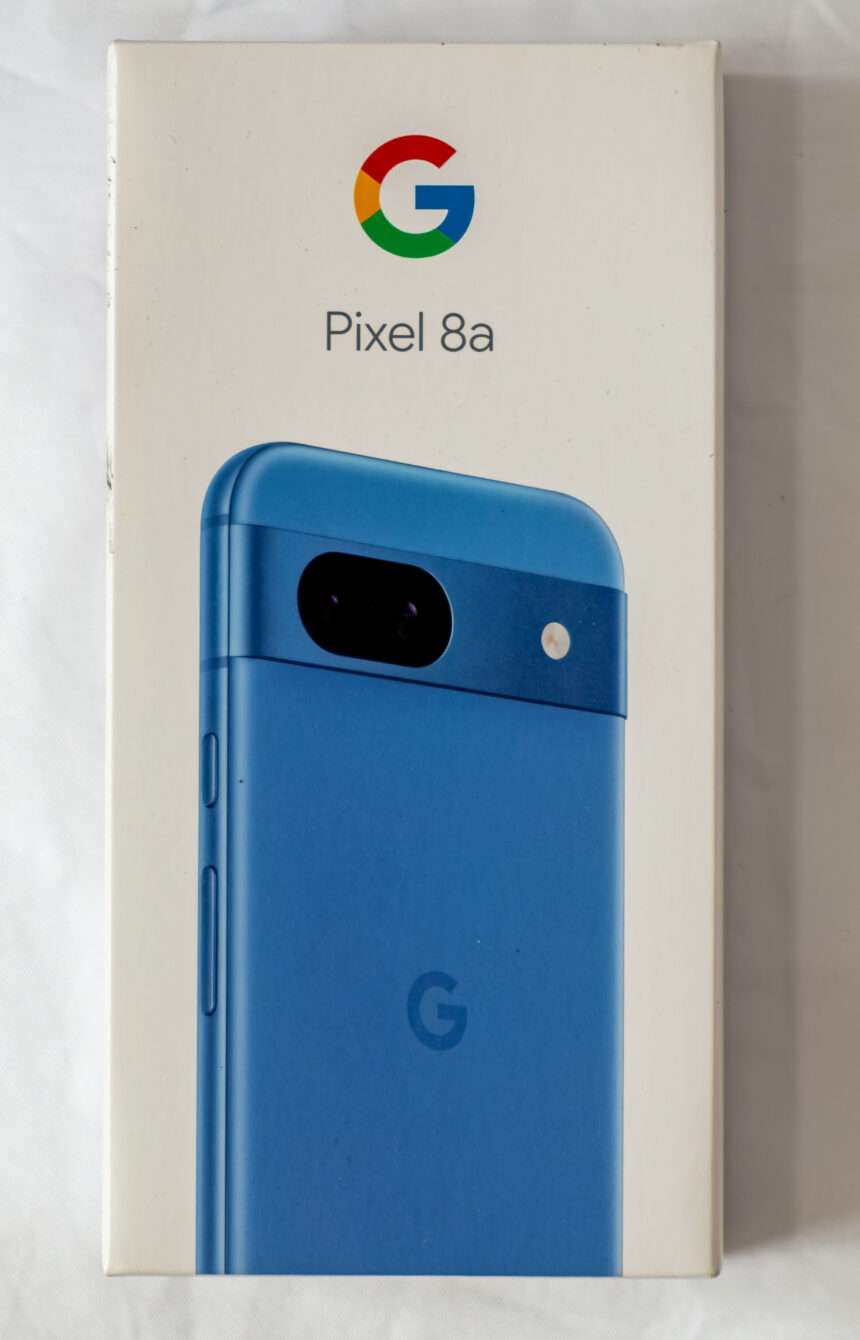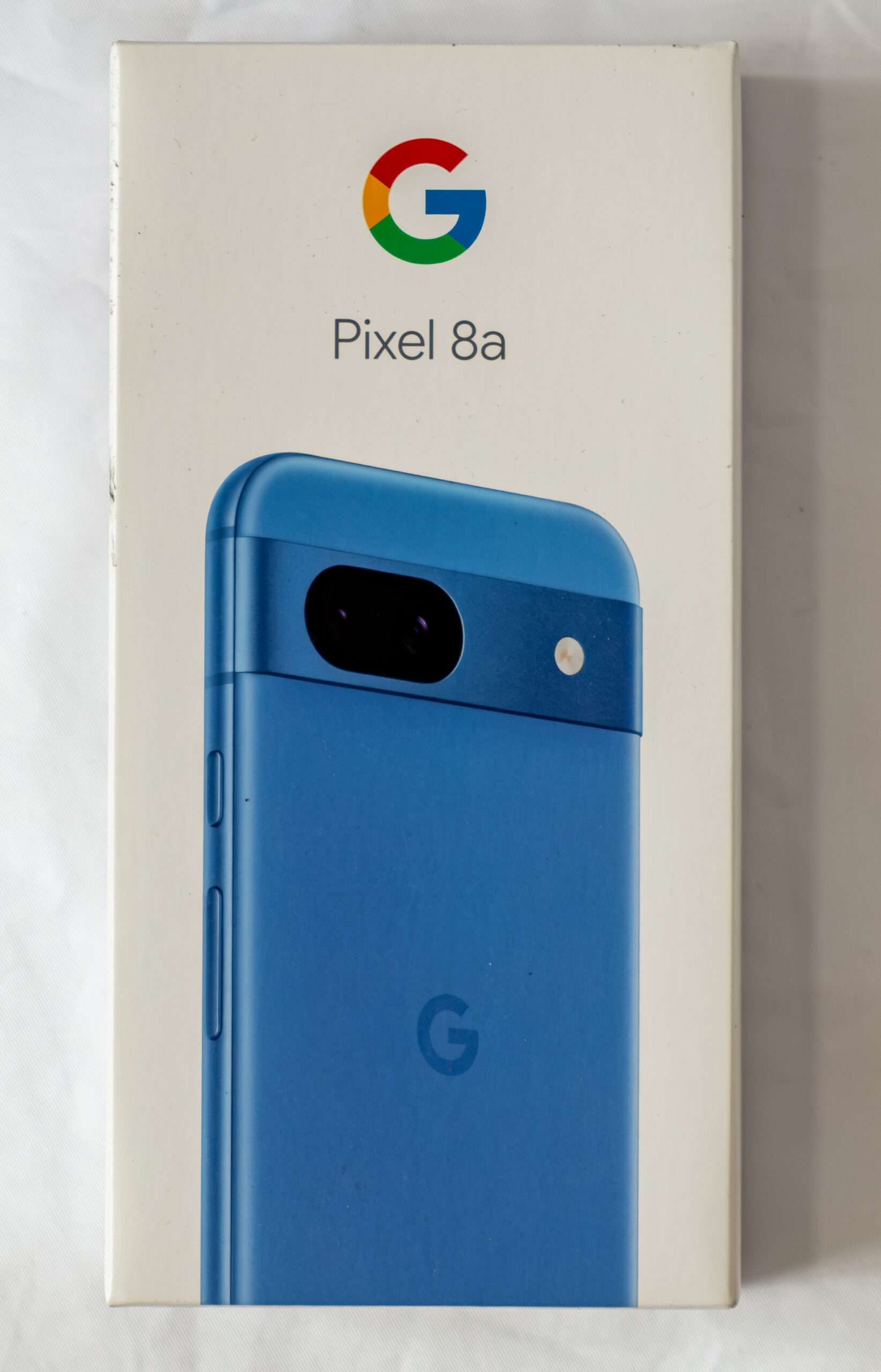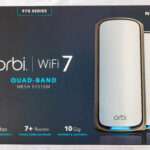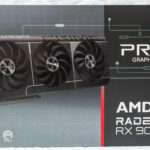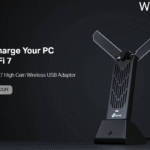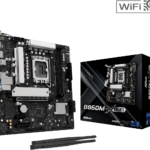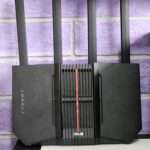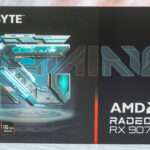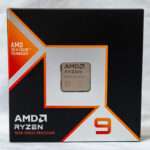Google’s latest phone, the Pixel 8a, continues the A-series tradition, offering a more budget-friendly alternative to the previous year’s Pixel 7a release. Typically, the A-series phones debut around mid-year, helping to keep the Pixel brand in the spotlight and providing Google with a boost in hardware sales ahead of their next high-end phone launch.
- Specifications
- Processor Specifications
- Graphics Specifications
- Camera Specifications
- Experience of holding the phone?
- Rear Camera Photo quality: Daylight
- Rear Camera Photo quality: Night
- Front Camera Photo quality:
- Rear Camera Video quality: Daylight
- Benchmark Result
- Should you buy Google Pixel 8a?
- Google Pixel 8a
- Pros
- Cons
The Pixel 8a features a 6.1″ OLED display with a 1080p resolution and a 120Hz refresh rate. It’s protected by Gorilla Glass 3, supports HDR, and can reach a peak brightness of 2000 nits.
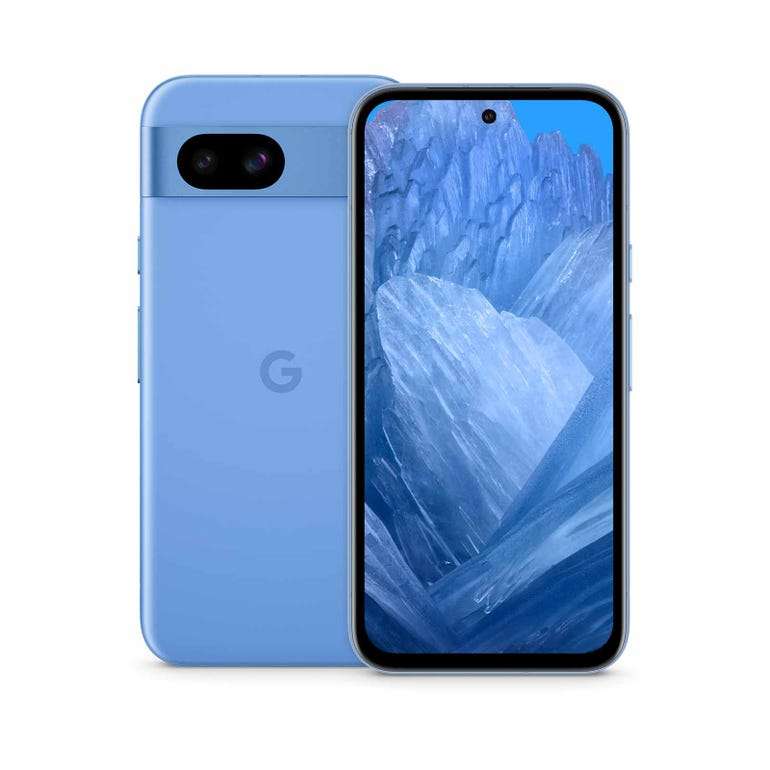
The Tensor G3 inside the Pixel 8a, coupled with 8GB LPDDR5x RAM and UFS 3.1 storage, leads to a speedy little phone. Of course, the 120Hz display adds to the smoothness of activities, as does Google’s optimization of Android on Pixel phones. The chipset includes Google’s Titan M2 security chip, which enhances device security, and a dedicated NPU (Neural Processing Unit) for AI-related tasks. The NPU manages real-time translation features and other services that require advanced AI processing.
Specifications
-
Screen: 6.1in 120Hz FHD+ OLED (430ppi)
-
Processor: Google Tensor G3
-
RAM: 8GB
-
Storage: 128 or 256GB
-
Operating system: Android 14
-
Camera: 64MP + 13MP ultrawide, 13MP selfie
-
Connectivity: 5G, Sim and eSim, wifi 6E, NFC, Bluetooth 5.3 and GNSS
-
Water resistance: IP67 (1m for 30 minutes)
-
Dimensions: 152.1 x 72.7 x 8.9mm
-
Weight: 188g
| Display | Type | OLED, HDR, 120Hz, 2000 nits (peak) |
| Size | 6.1 inches, 90.3 cm2 (~81.6% screen-to-body ratio) | |
| Resolution | 1080 x 2400 pixels, 20:9 ratio (~430 ppi density) | |
| Protection | Corning Gorilla Glass 3 | |
| Always-on display | ||
| Platform | OS | Android 14 |
| Chipset | Google Tensor G3 (4 nm) | |
| CPU | Nona-core (1×3.0 GHz Cortex-X3 & 4×2.45 GHz Cortex-A715 & 4×2.15 GHz Cortex-A510) | |
| GPU | Immortalis-G715s MC10 | |
| Memory | Card slot | No |
| Internal | 128GB 8GB RAM, 256GB 8GB RAM | |
| UFS 3.1 | ||
| Main Camera | Dual | 64 MP, f/1.9, 26mm (wide), 1/1.73″, 0.8µm, dual pixel PDAF, OIS |
| 13 MP, f/2.2, 120˚ (ultrawide), 1.12µm | ||
| Features | Dual-LED flash, Pixel Shift, Ultra HDR, panorama, Best Take | |
| Video | 4K@30/60fps, 1080p@30/60/120/240fps, OIS | |
| Selfie camera | Single | 13 MP, f/2.2, 20mm (ultrawide), 1.12µm |
| Features | Auto-HDR, panorama | |
| Video | 4K@30fps, 1080p@30fps | |
| Sound | Loudspeaker | Yes, with stereo speakers |
| 3.5mm jack | No | |
| Comms | WLAN | Wi-Fi 802.11 a/b/g/n/ac/6e, dual/tri-band (market/region dependent) |
| Bluetooth | 5.3, A2DP, LE | |
| Positioning | GPS, GLONASS, GALILEO, BDS, QZSS, NavIC | |
| NFC | Yes | |
| Radio | No | |
| USB | USB Type-C 3.2 | |
| Features | Sensors | Fingerprint (under display, optical), accelerometer, gyro, proximity, compass, barometer |
| Battery | Type | Li-Po 4492 mAh, non-removable |
| Charging | 18W wired, PD3.0 | |
| 7.5W wireless |
Processor Specifications
The Tensor G3 processor in the Pixel 8 series introduces an unconventional nine-core configuration. It consists of four Cortex-A510 cores, four Cortex-A715 cores, and a single Cortex-X3 core. The two higher-end cores (Cortex-A715 and Cortex-X3) operate at higher frequencies compared to the previous Tensor G2, making this setup a 1+4+4 architecture. This arrangement is unusual, especially compared to the more common 1+3+4 layout used by many competitors. It’s a notable shift from Google’s earlier 2+2+4 configuration seen in the Tensor G2 and the first-generation Tensor. A key change with the Tensor G3 is the switch to ARMv9 cores, which means the Pixel 8 series is capable of running only 64-bit code. This transition renders some older, 32-bit apps incompatible with the device.
CPU Configuration:
- 1x Cortex-X3 (3.0 GHz) – High-performance core
- 4x Cortex-A715 (2.45 GHz) – Balanced performance cores
- 4x Cortex-A510 (2.15 GHz) – Efficiency cores
| Tensor G3 (zuma)
Google Pixel 8 Pro/8/8a |
Tensor G2 (gs201)
Google Pixel 7 Pro/7/7a |
Tensor (gs101)
Google Pixel 6 Pro/6/6a |
|
| Big cores | 1x Cortex-X3 @ 3.0GHz | 2x Cortex-X1 @ 2.85GHz | 2x Cortex-X1 @ 2.8GHz |
| Mid cores | 4x Cortex-A715 @ 2.45GHz | 2x Cortex-A78 @ 2.3GHz | 2x Cortex-A76 @ 2.25GHz |
| Little cores | 4x Cortex-A510 @ 2.15GHz | 4x Cortex-A55 @ 1.8GHz | 4x Cortex-A55 @ 1.8GHz |
Graphics Specifications
Immortalis-G715 is Arm’s new flagship GPU. Built on the Arm GPU Valhall architecture, Immortalis-G715 delivers the highest ever performance and is the first Arm GPU to introduce hardware-based Ray Tracing support on mobile. Like Mali-G715, it adopts new graphics features and upgrades, including Variable Rate Shading and an improved Execution Engine for optimized mobile gaming experiences for longer. Added support for Matrix Multiply instruction delivers machine learning (ML) improvements for advanced ML use cases mobile, including computational photography and image enhancements.
- Hardware-based ray tracing support for mobile
- Variable rate shading
- Matrix multiply instruction support
- Improved execution engine
- Developer support through a wide range of resources and tools to optimize performance and efficiency across all mobile gaming applications.
| Tensor G3 (zuma) Google Pixel 8 Pro/8/8a | Tensor G2 (gs201) Google Pixel 7 Pro/7/7a | Tensor (gs101) Google Pixel 6 Pro/6/6a | |
| GPU Core Model | Mali-G715 (Immortalis) | Mali-G710 | Mali-G78 |
| Core Count | 7 | 7 | 20 |
| Frequency (shaders) | 890MHz | 848MHz | 848MHz |
Notice: Ray Tracing not supported across all Google Pixel 8 series.
On the right side of the Pixel 8a, you’ll find the power button and the volume up & down controls. Unfortunately, the placement of these buttons isn’t ideal, as they’re positioned too close to each other. This can lead to accidentally pressing the wrong button, which can be frustrating during regular use.
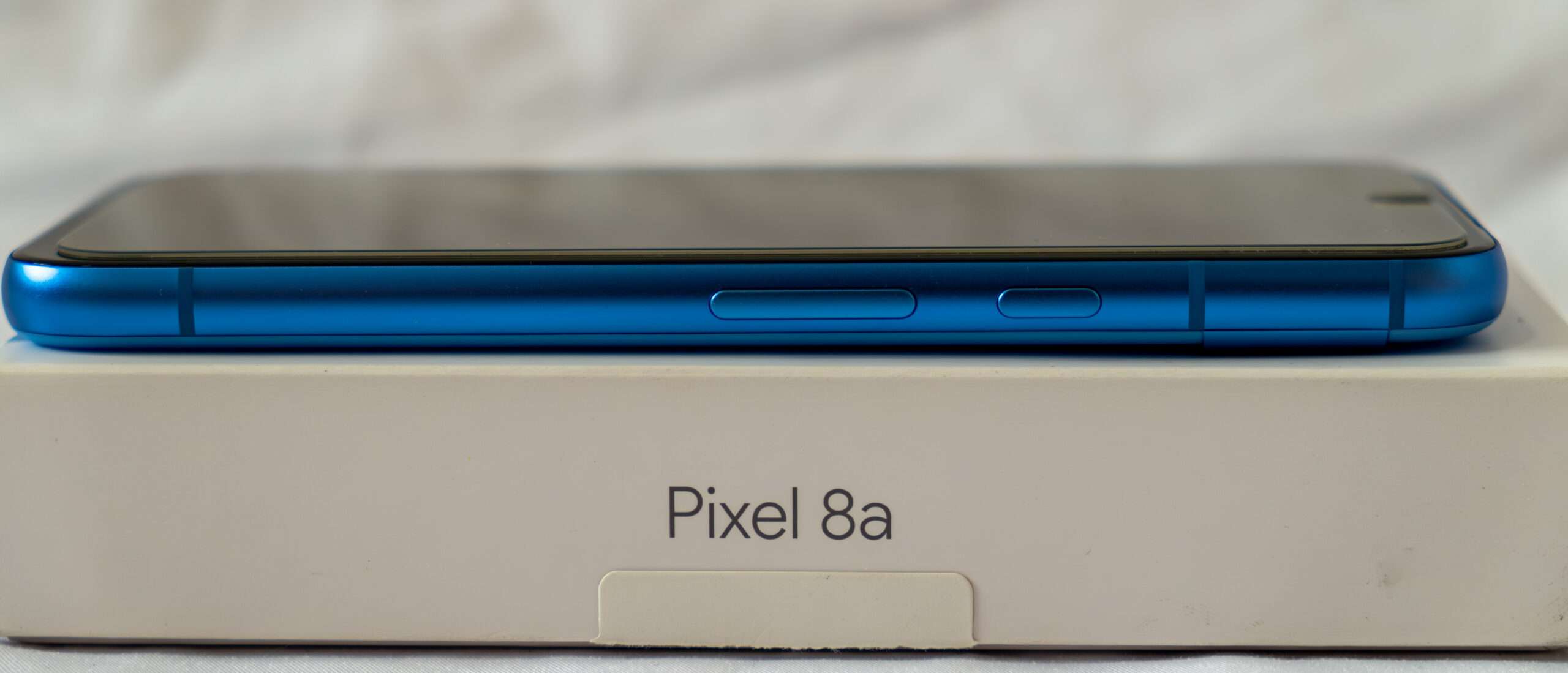
The back of the Pixel 8a features a nice matte finish that feels more premium and is less prone to fingerprint smudges compared to the glossy finishes on the Pixel 8a. There are four color options to choose from: Aloe (green), Bay (light blue), Obsidian (black), and Porcelain (white).
However, there’s a downside if you need more storage. The 256GB configuration is only available in the Obsidian color, so if you prefer another color, you’ll have to settle for the 128GB version. Unfortunately, like most modern phones, the Pixel 8a doesn’t support expandable storage.
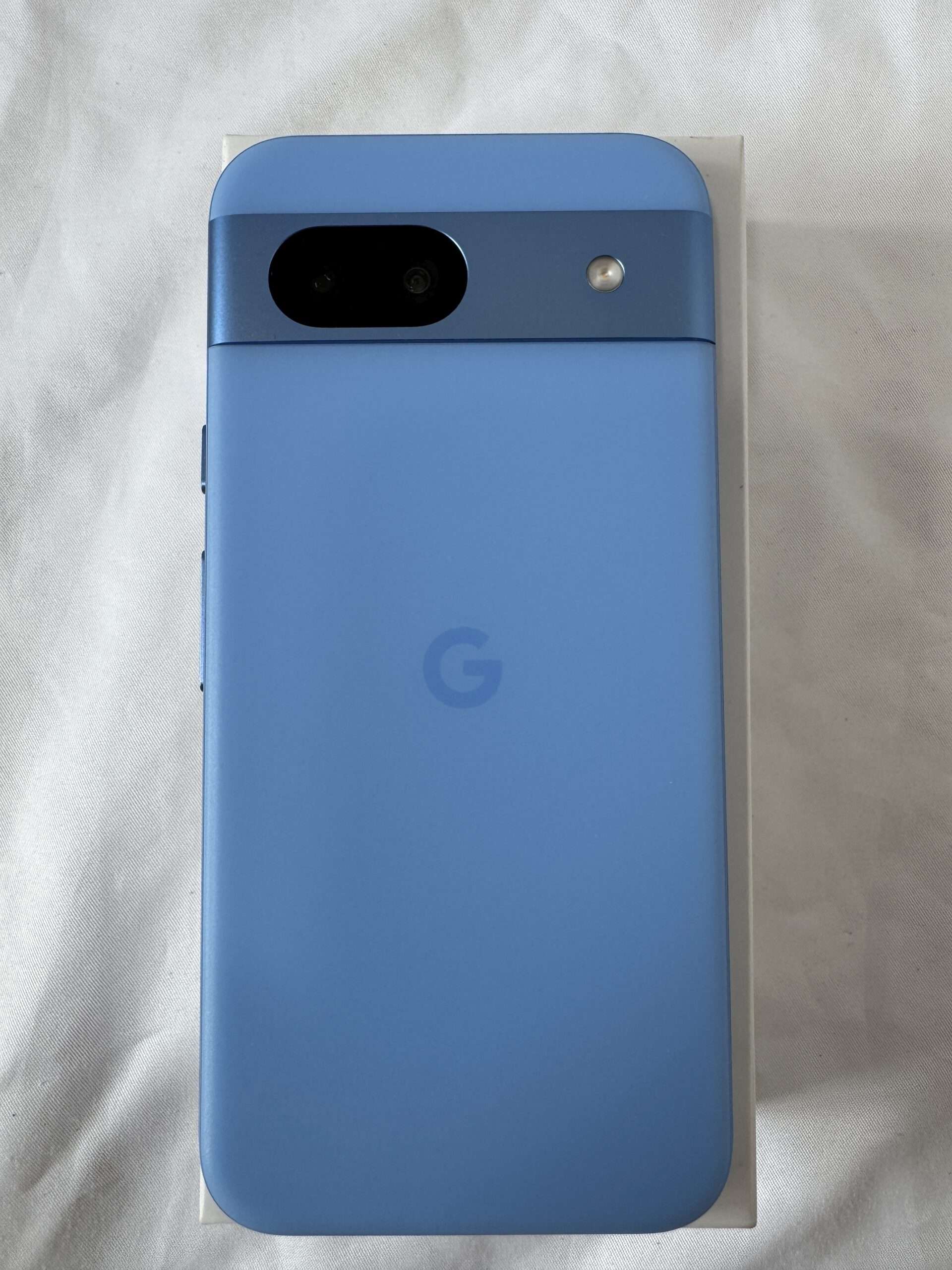
The Pixel 8a’s camera has smaller pixel widths compared to some other models, which can impact overall image quality since larger pixels typically capture more light. Additionally, the Pixel 8a lacks laser autofocus and a macro focus mode. The absence of macro mode may explain why some close-up shots, like food photos, might lose sharpness in certain areas.
Camera Specifications
- Rear camera: Wide (main): 64 MP, f/1.9, 26mm, 1/1.73″, 0.8µm, dual pixel PDAF, OIS; Ultra wide angle: 13 MP, f/2.2, 120˚, 1.12µm.
- Front camera: 13 MP, f/2.2, 20mm (ultrawide), 1.12µm.
- Video capture: Rear camera: 4K@30/60fps, 1080p@30/60/120/240fps, OIS; Front camera: 4K@30fps, 1080p@30fps.
The main camera on the Pixel 8a now uses a Sony IMX 787 64MP sensor with a 1/1.73″ size, 0.8µm pixels, and a Quad-Bayer color filter, positioned behind a 25mm f/1.9 stabilized lens (OIS). This setup supports 2x lossless zoom. The ultrawide camera features a 13MP sensor with 1.12µm pixels and a fixed focus set at infinity, which means there’s no macro option like on the Pixel 8a.
The front-facing camera also has a 13MP sensor with 1.12µm pixels and a fixed focus. The lens is likely the same as on the Pixel 8—a 20mm f/2.2 lens designed for wide-angle shots. Additionally, a 1.4x shortcut crop is available on the viewfinder for more flexibility in framing your shots.
The Pixel 8a essentially shares the same camera setup as the Pixel 7a, featuring a 64-megapixel main camera paired with a 13-megapixel ultrawide camera.
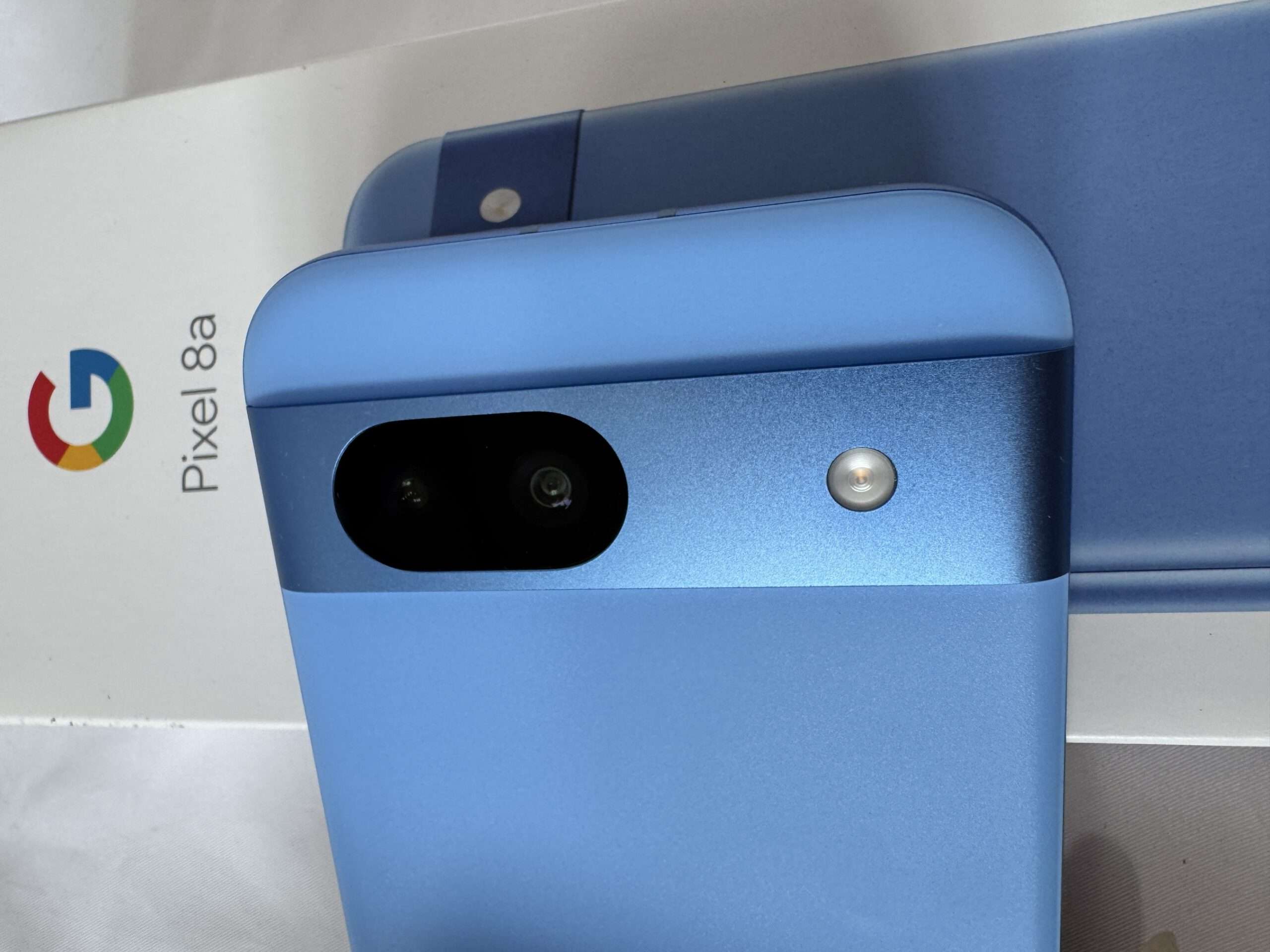
On the bottom of the Pixel 8a, you’ll find two speakers and a USB Type-C charging port. The phone supports Power Delivery 3.0 at 18 watts, but we found this charging speed to be quite slow compared to other mid-range smartphones like the Redmi Note series or the Samsung Galaxy A55 5G, which offer faster charging capabilities.
|
Battery capacity
|
4,492 mAh
|
|
Wired charging
|
18W wired charging, USB-PD 3
|
|
Wired charging times
|
25%: 14 minutes
50%: 32 minutes 75%: 54 minutes 100%: 100 minutes |
|
Wireless charging
|
7.5W wireless charging, Qi
|
|
Charging adapter
|
Not included in-box, sold separately
|
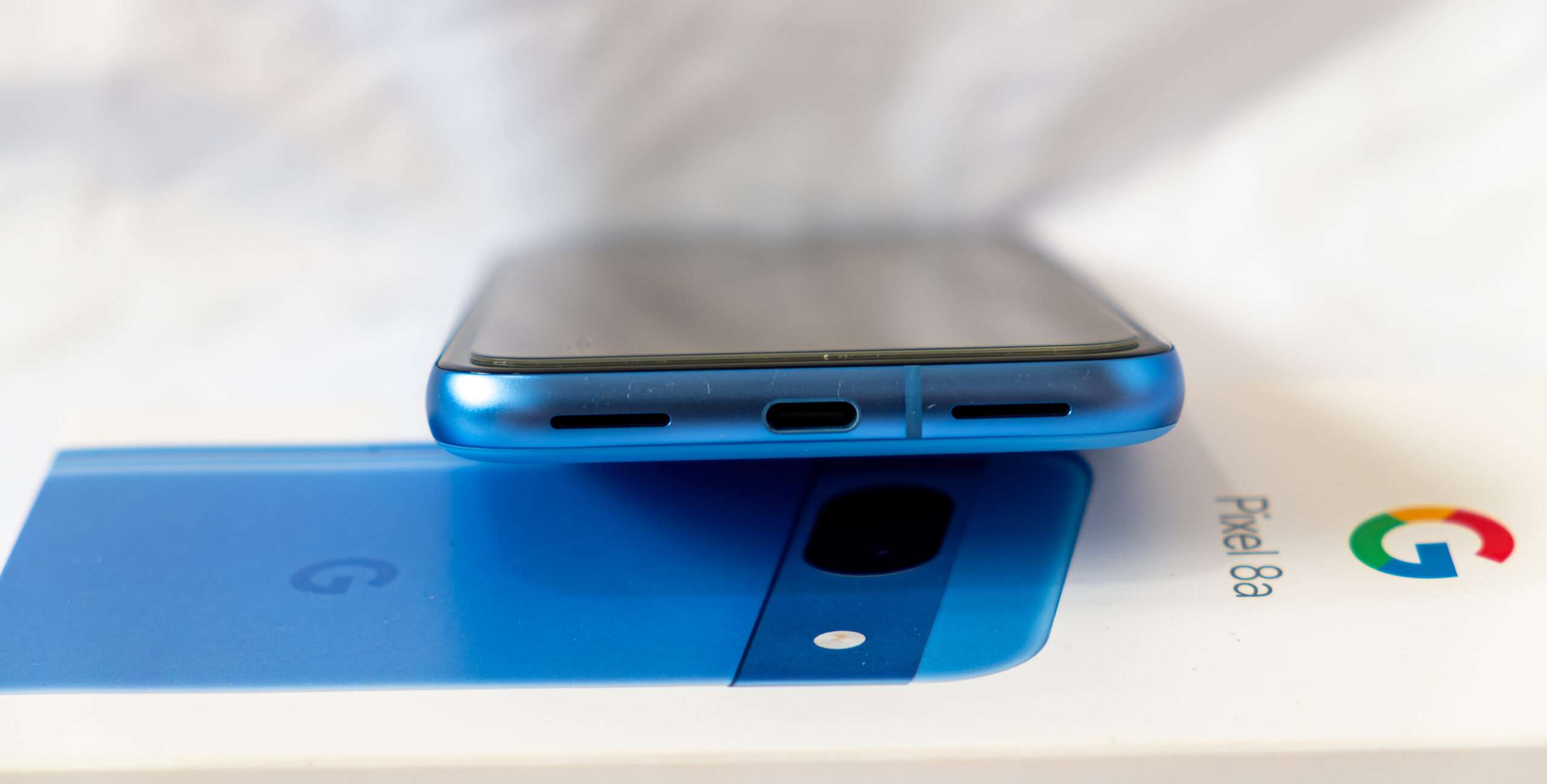
Experience of holding the phone?
The Pixel 8a is an ideal size for a phone. It closely resembles the Pixel 8 but without the bulky camera bump, and it has smoother edges that make it comfortable to use without a case. It’s not a large phone, so you can easily hold it with one hand for extended periods, reach most of the screen without needing to adjust your grip, and it fits comfortably in pockets of all sizes.
When you pick up and hold the Pixel 8a, it feels like a phone designed with the human hand in mind. Its gentle curves, the soft matte finish on the back, and its overall build invite you to be on the move with it—taking it on adventures without worrying about its durability. It might sound odd to say about a phone, but the reason I often avoid larger devices like the Pixel 8 Pro is their size makes them feel like a chore to carry around. A phone should be fun and easy to take with you, not feel like you’re lugging work around.
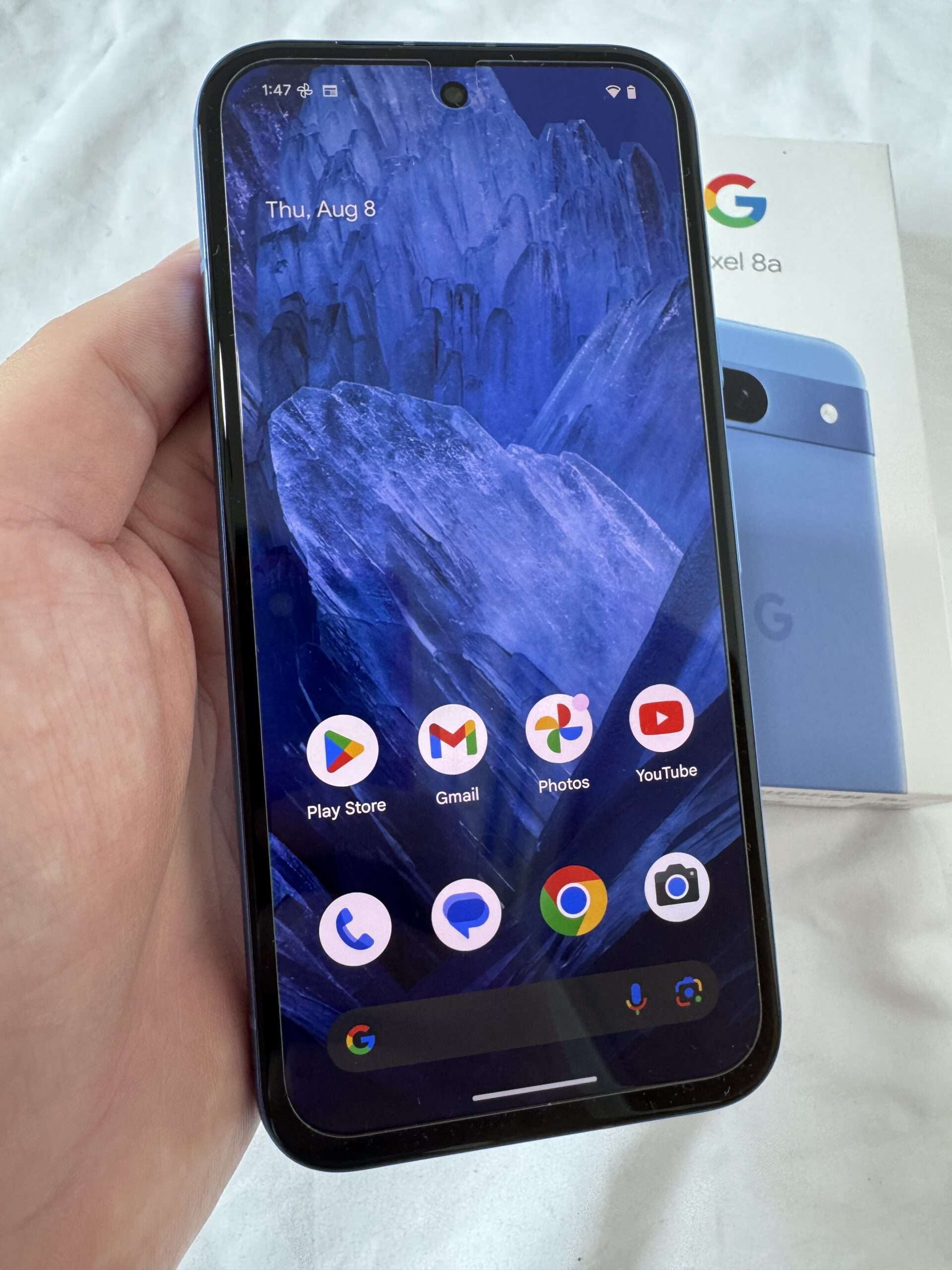
We were a bit disappointed with the touchscreen on the Pixel 8a. At times, it wasn’t as accurate as expected, and there were instances where the screen didn’t respond to press-and-hold actions, even with the screen protector mode enabled. We had applied a glass screen protector to protect the phone, but this issue persisted, which is frustrating for a device in this category. While gaming or browsing the web and using Facebook, we didn’t encounter any issues with the touchscreen. It performed smoothly and responsively during these activities.
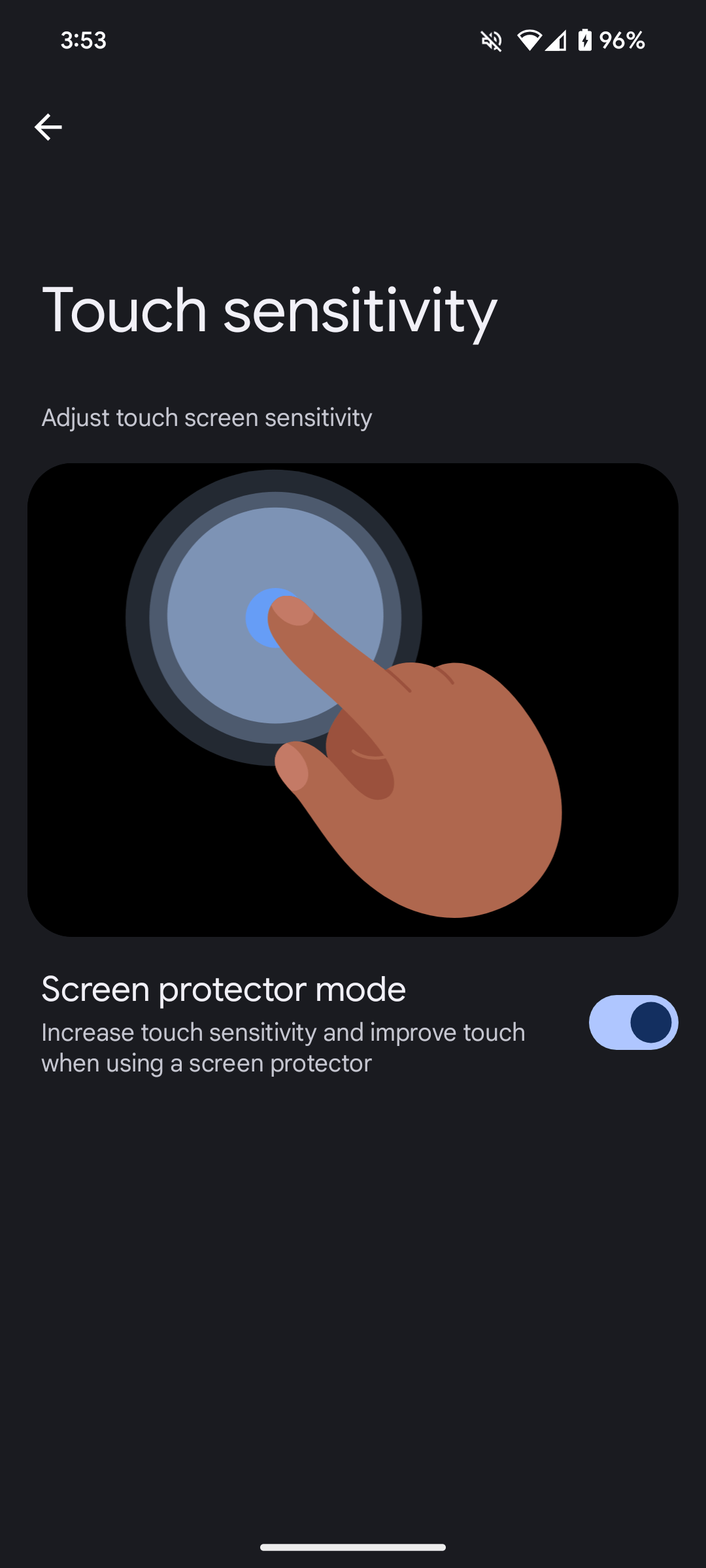
The Pixel 8a accessories package includes a USB-C cable and a USB-A-to-C adapter.
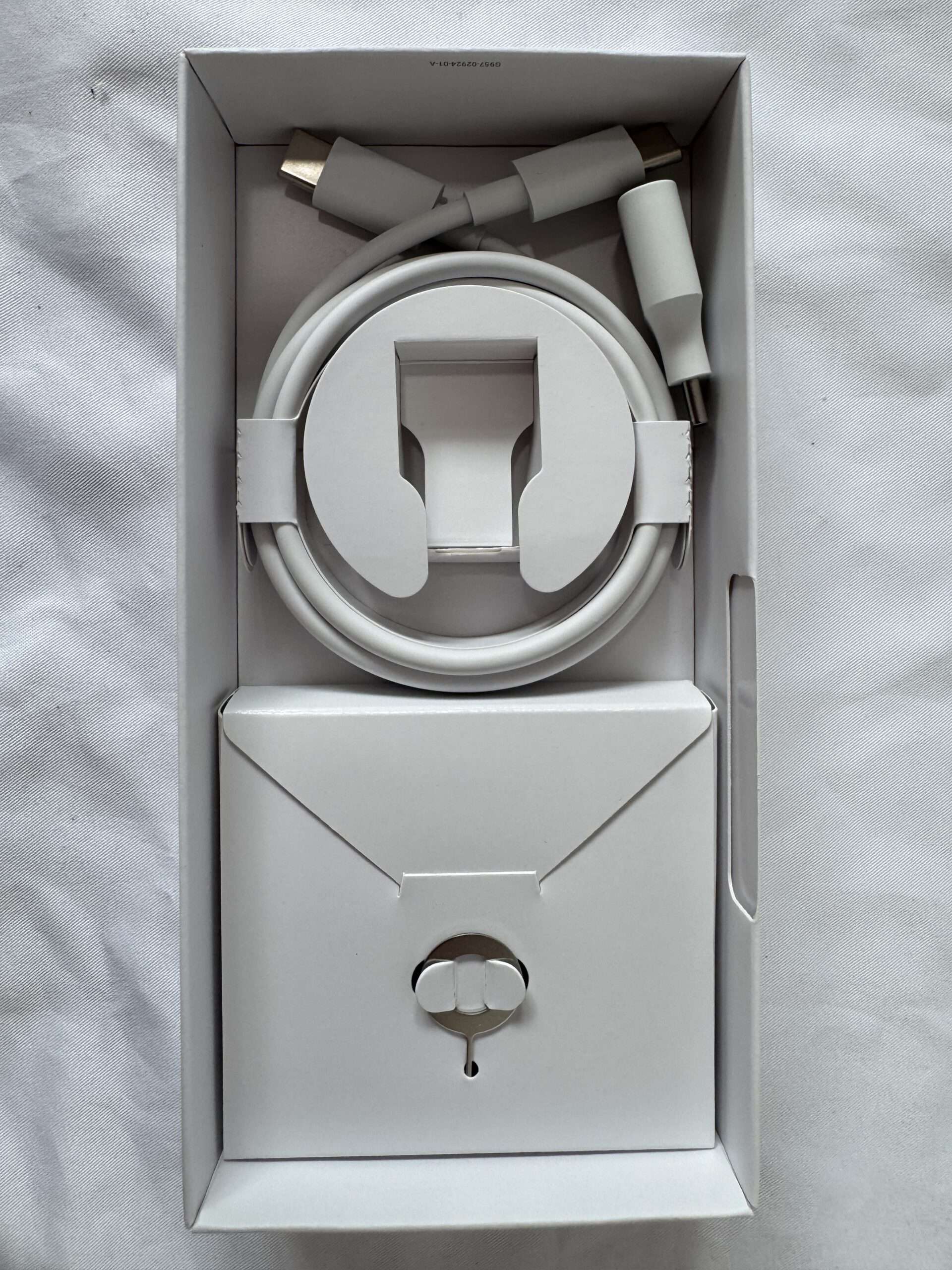
Rear Camera Photo quality: Daylight
The 16MP images from the Pixel 8a’s main camera are excellent. They capture abundant detail with just the right amount of sharpness, minimal noise, and a wide dynamic range. The white balance is consistently accurate, and the color rendition is vibrant and true to life.
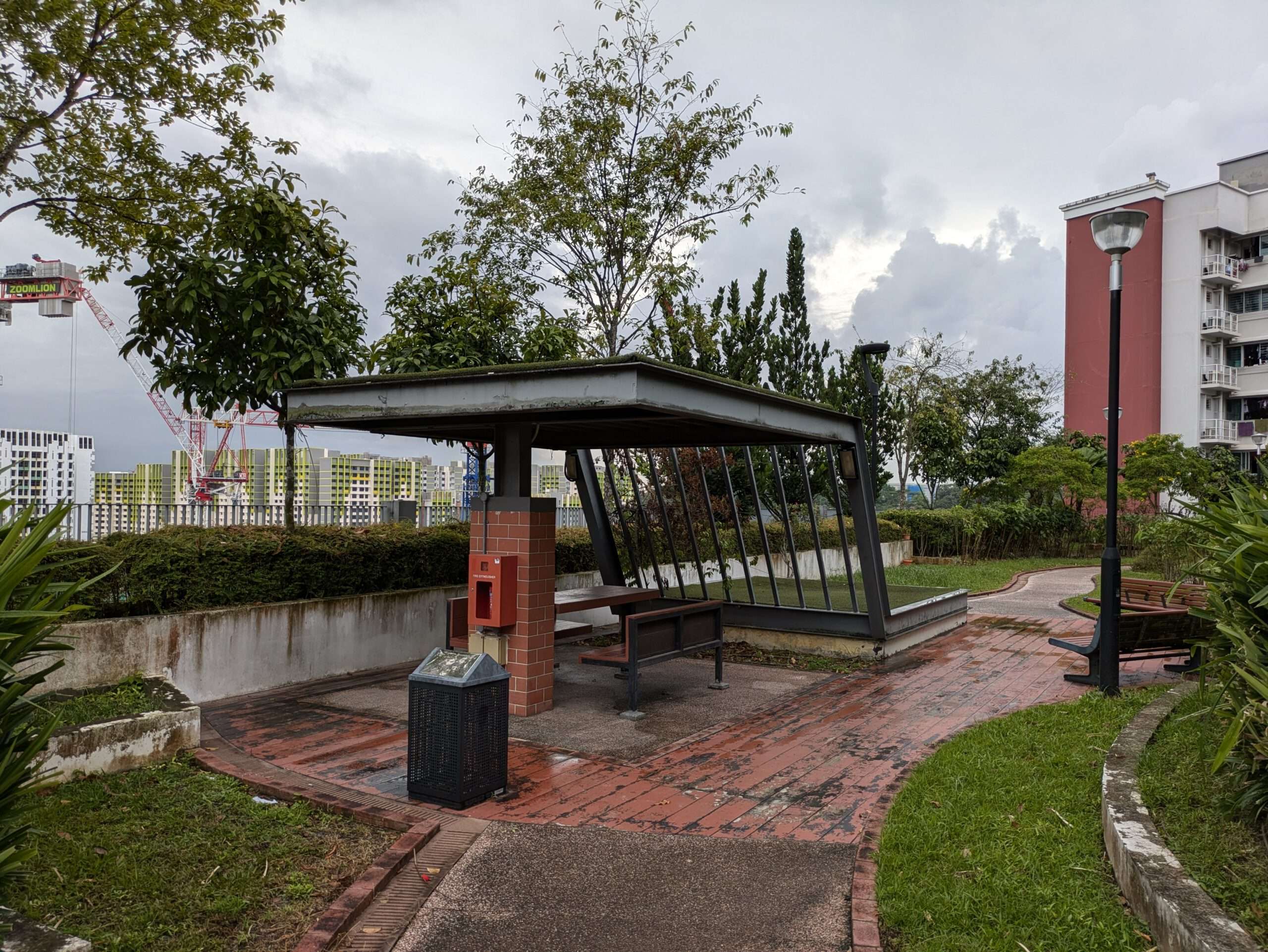
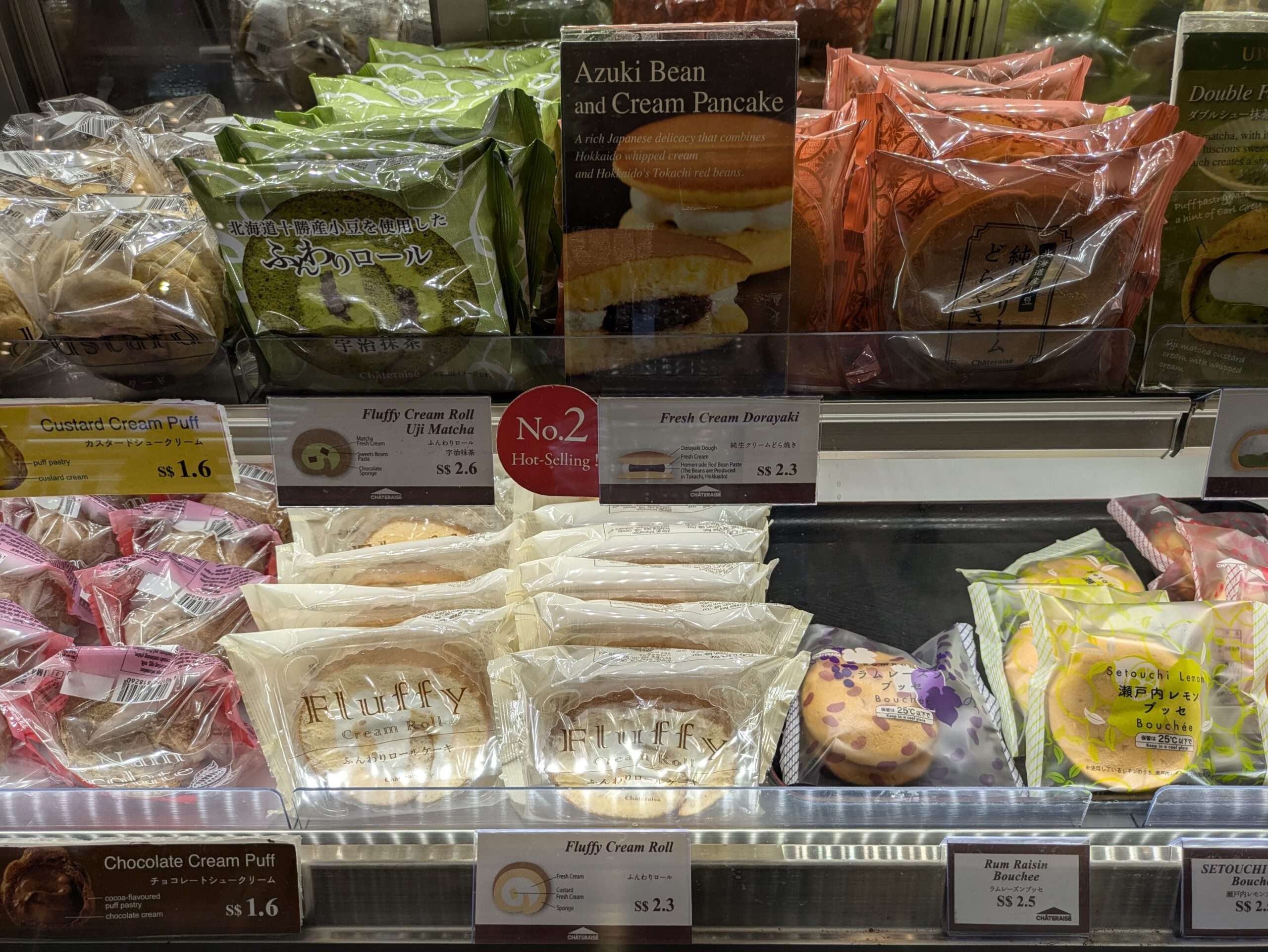


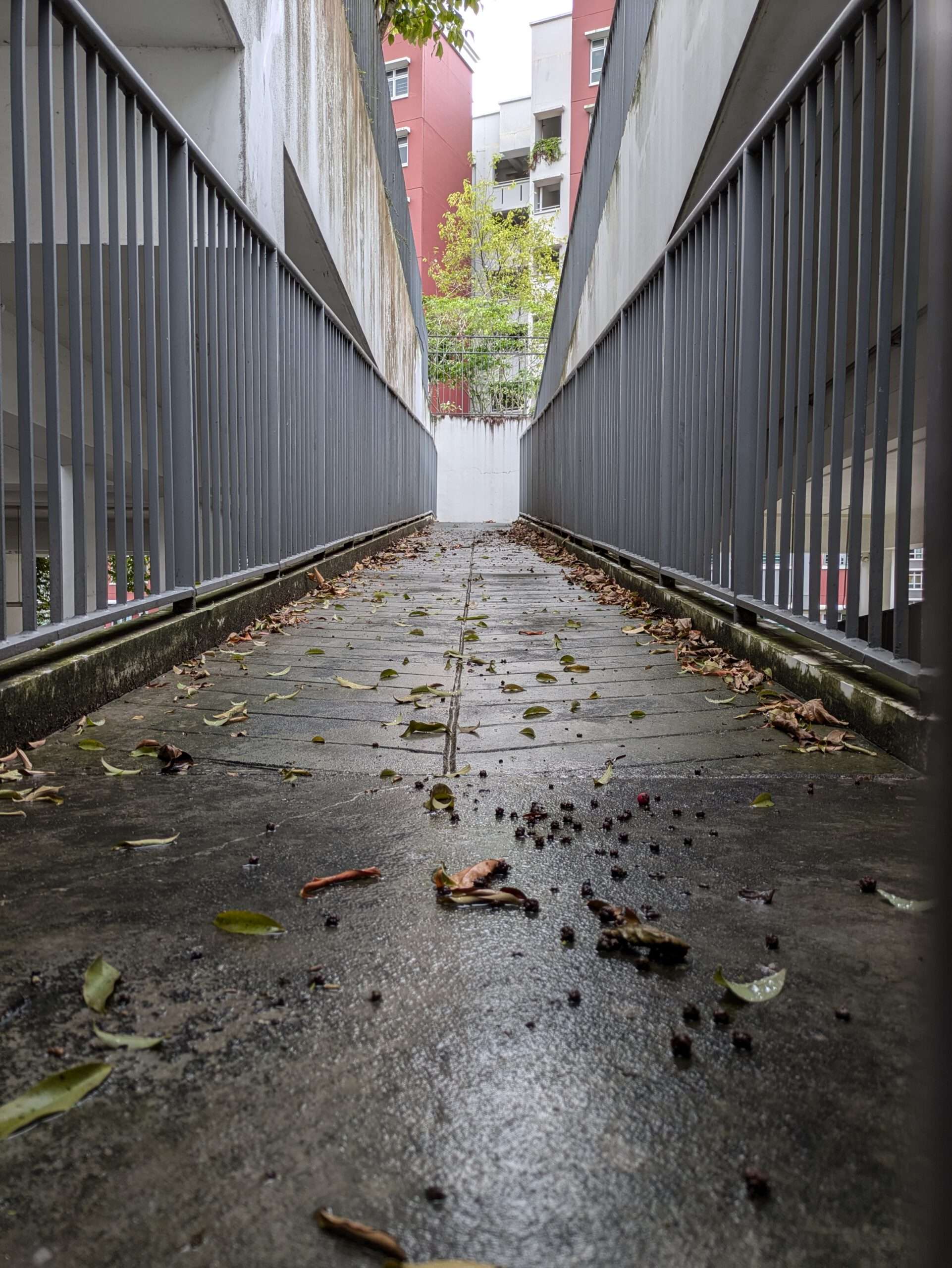
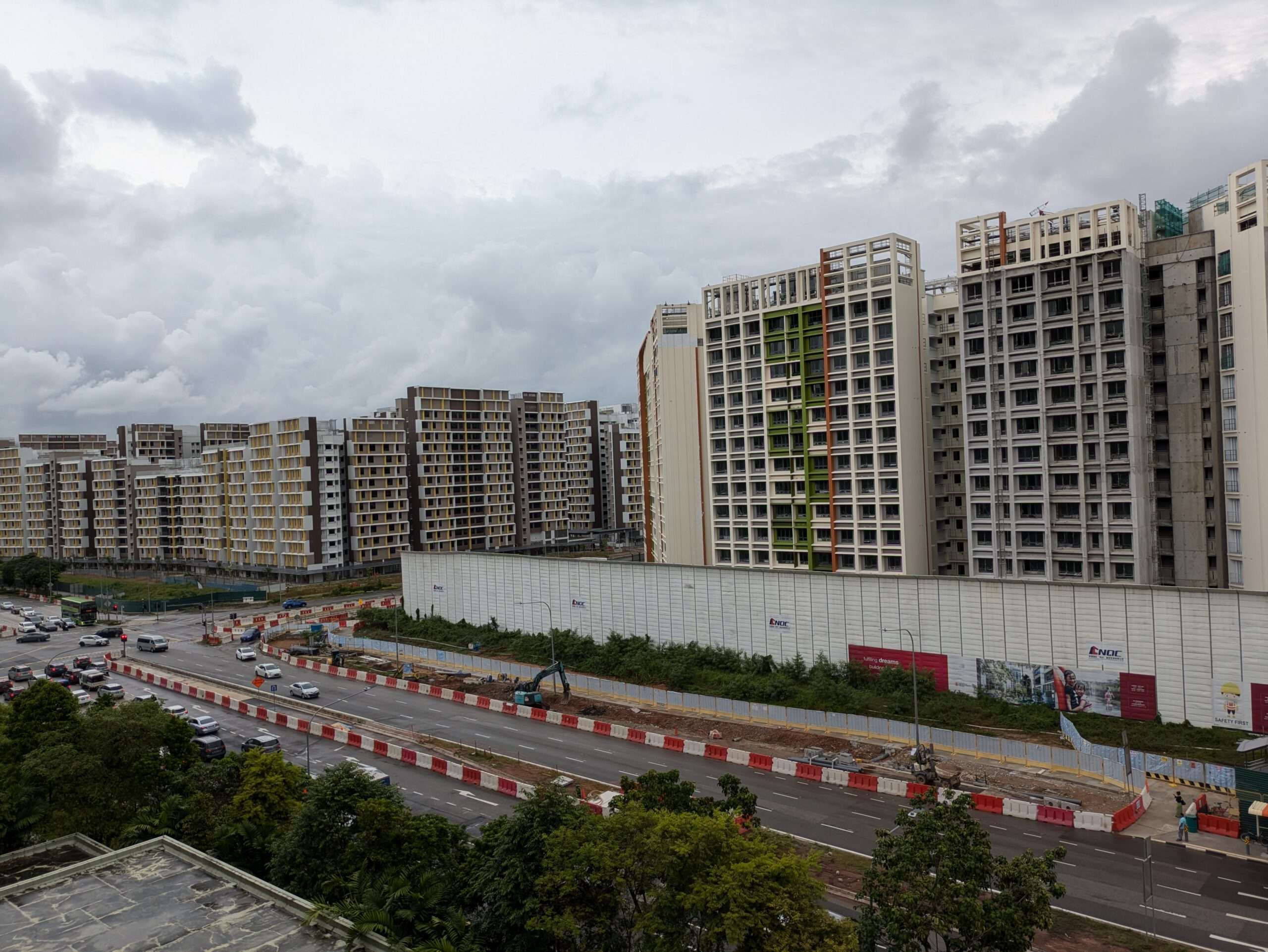
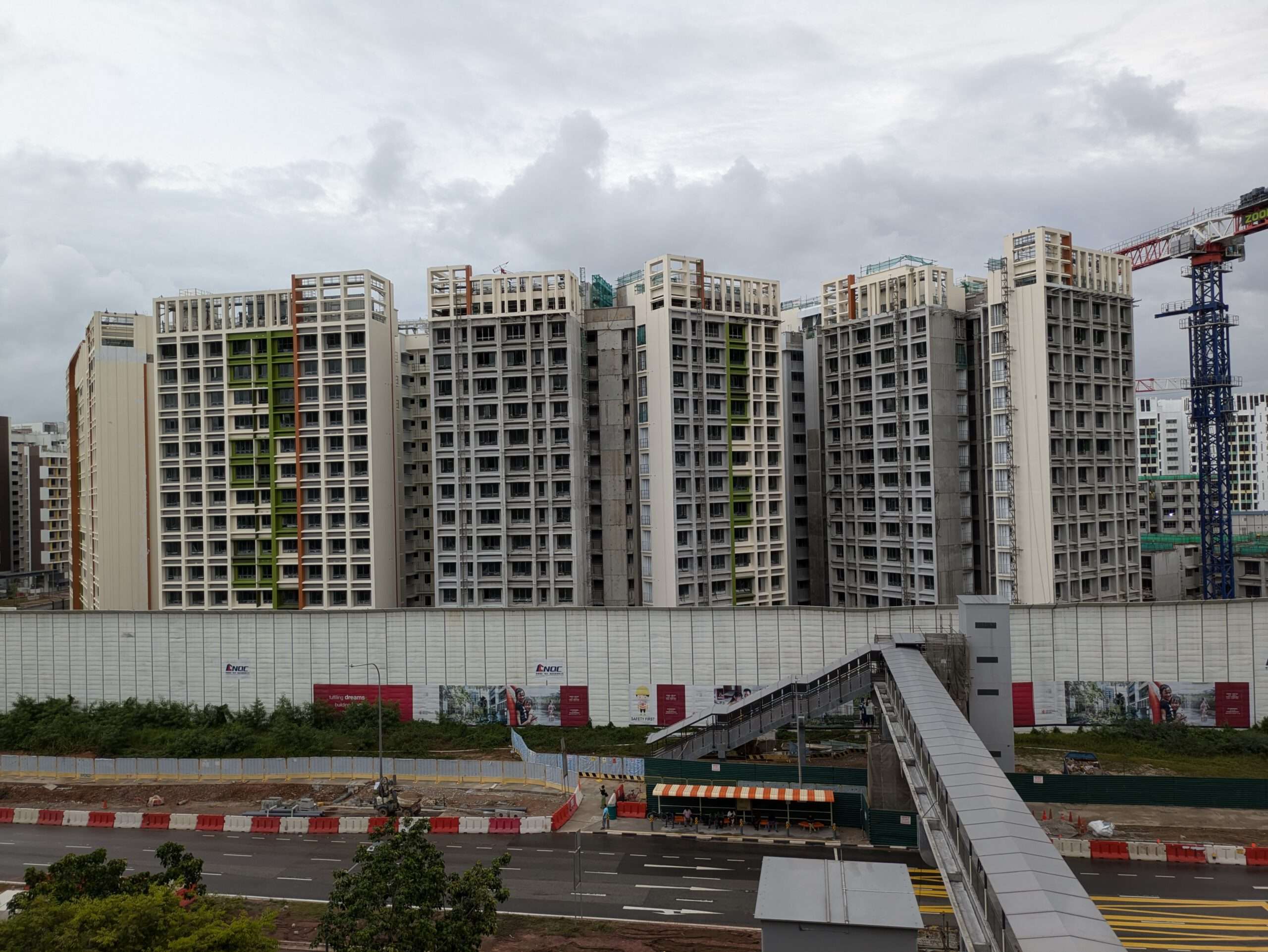


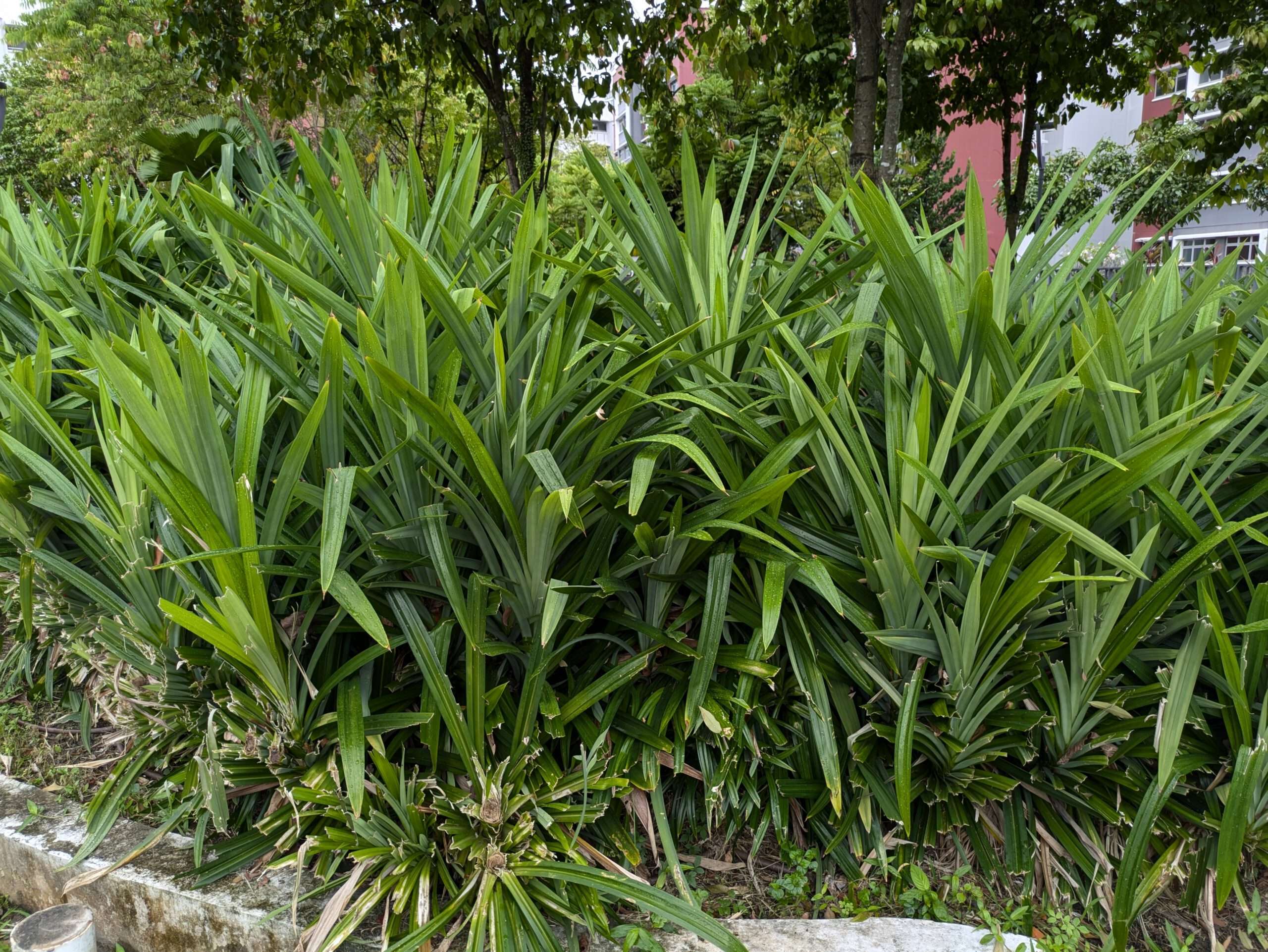
Rear Camera Photo quality: Night
While night mode may not always activate if the scene’s brightness exceeds a certain threshold, it likely still applies some level of enhancement unless you manually turn it off. This ensures that you get improved low-light performance and detail in your nighttime shots.
The photos from the Pixel 8a provide a good level of detail, with noise kept to a low and tolerable level. The colors are nicely saturated and realistic, and the dynamic range is generally good, often wide enough to capture more details in both highlights and shadows.
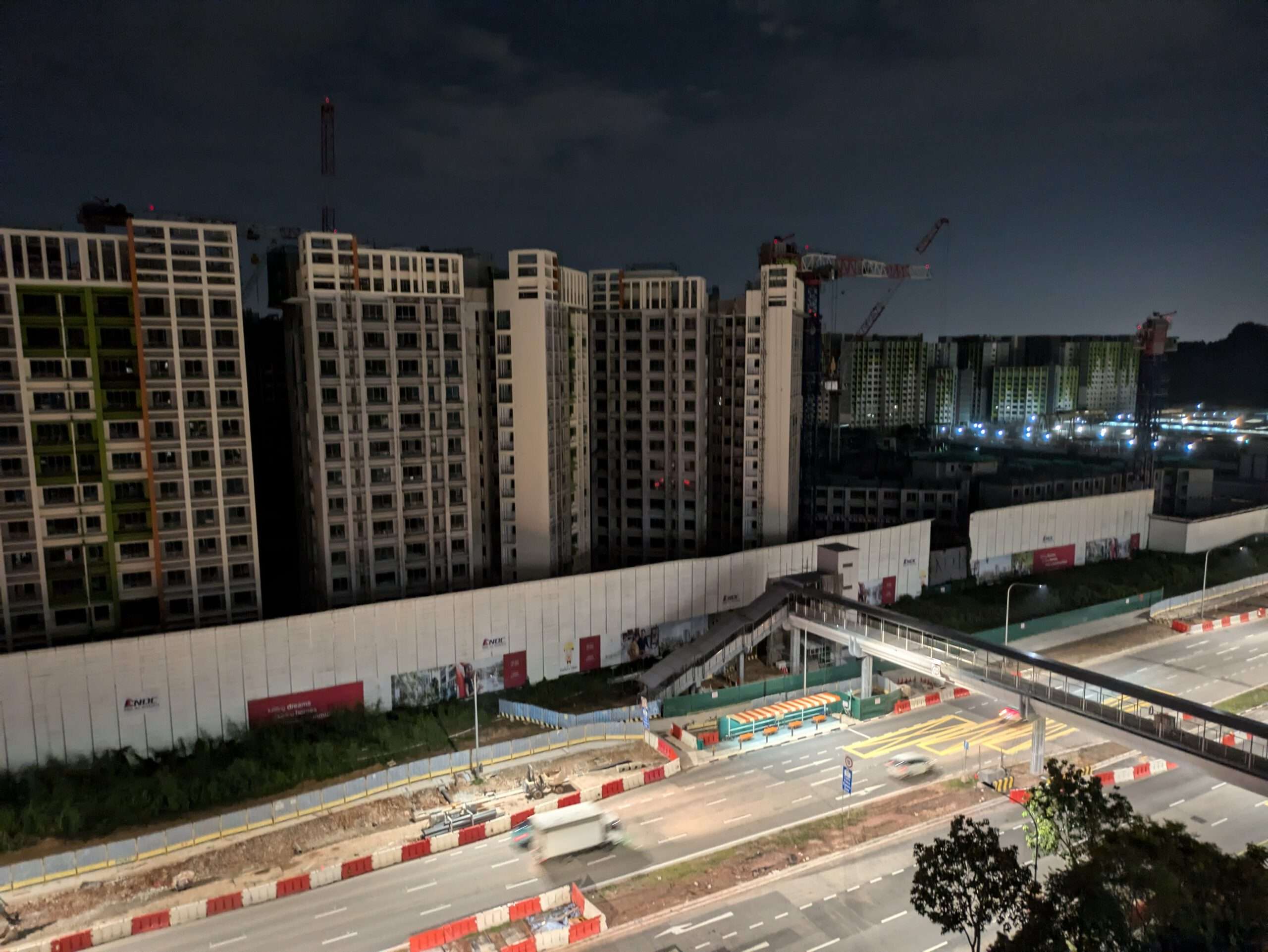
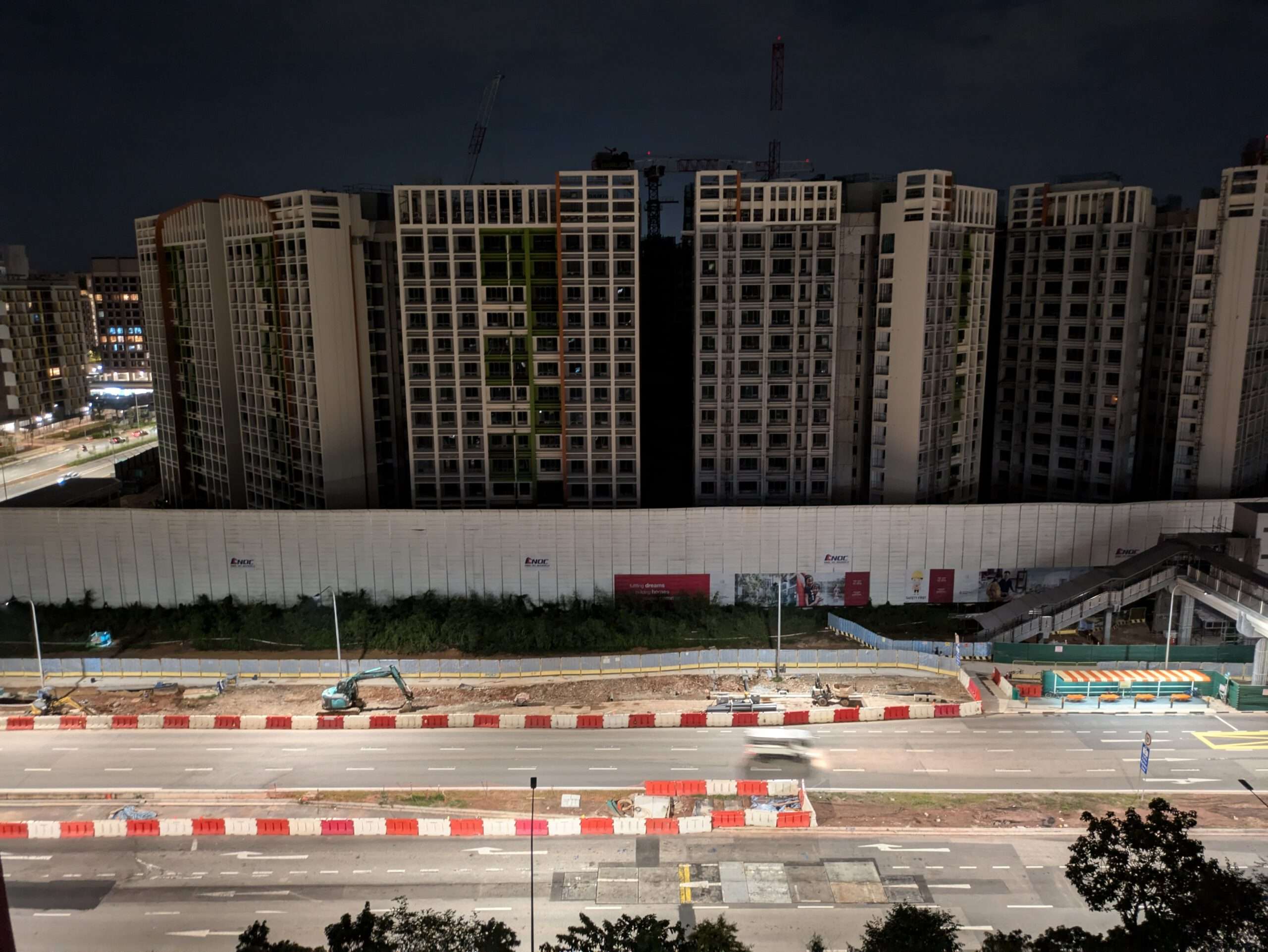

Front Camera Photo quality:
For selfies, the Pixel 8a offers two magnification levels: 1x and 1.4x. Both modes produce 12MP photos, slightly less than the full 13MP resolution. The selfies are impressive, with good detail, minimal noise, accurate colors, and a wide dynamic range. The overall rendition is natural, and while there are certainly better selfies out there, these are quite competitive and more than satisfactory.
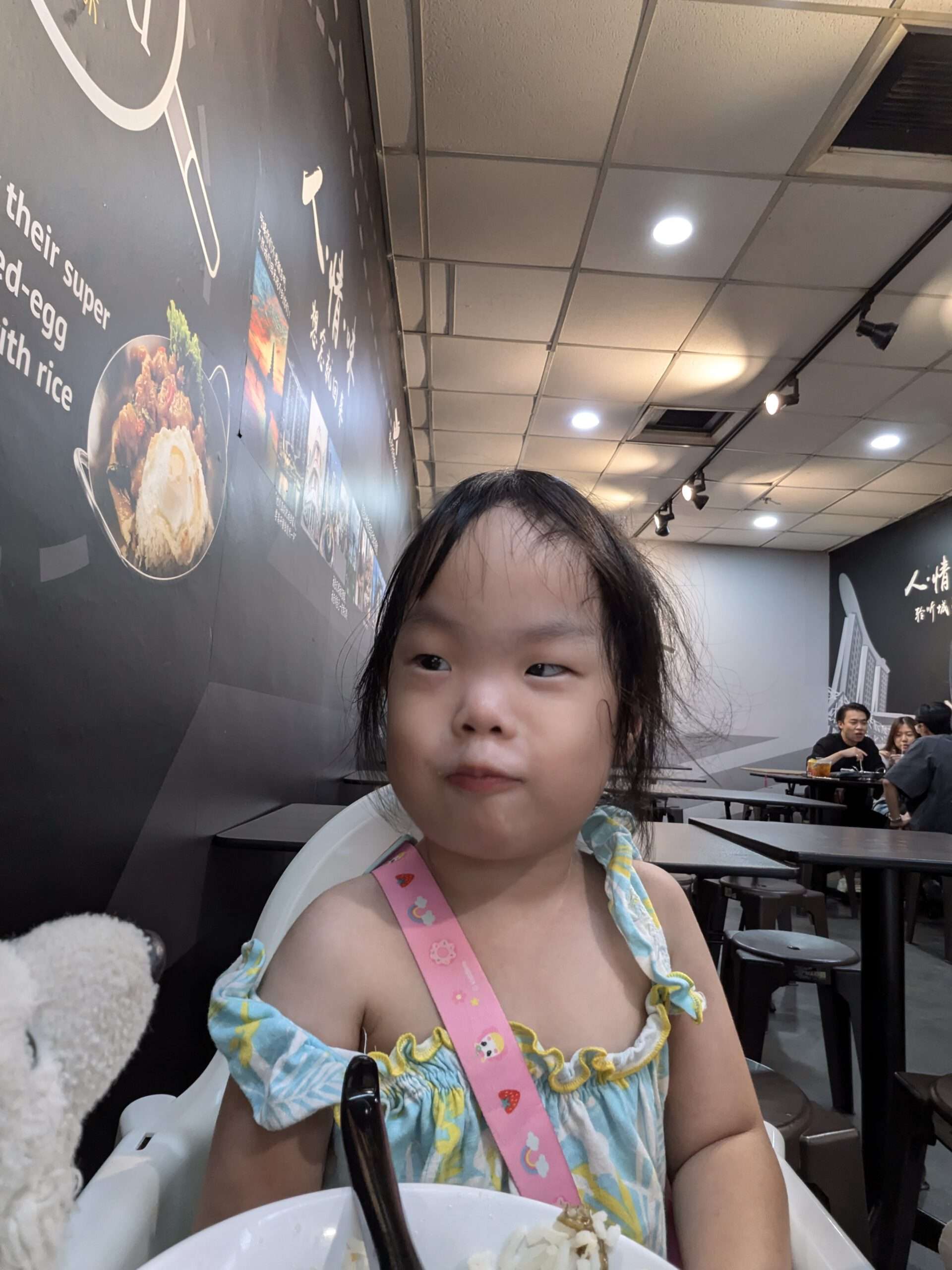
Rear Camera Video quality: Daylight
The Pixel 8a’s main camera supports video recording up to 4K60, while the ultrawide and selfie cameras are limited to 4K30. All three cameras can record in FHD60. Electronic Image Stabilization (EIS) is available and effective across all cameras and resolutions, and can be toggled on or off. The default video codec is h.264, but h.265 is also an option in the settings. Audio is recorded in stereo at 190Kbps and delivers clear, high-quality sound. Overall, EIS performs well across all camera modes.
Full HD: 1080P EIS enable
4K: EIS enable
Benchmark Result
Latest Build: Android 14 – 5th August 2024 Build AP2A.240805.005.A1
The Tensor G3’s core performs exceptionally well, but the overall multi-core performance of the G3 is more in line with mid-range levels. The GPU performance is also considered upper-tier mid-range; it’s solid but doesn’t quite reach the recent Snapdragon flagship standards. Additionally, the Tensor G3 lacks hardware-accelerated ray-tracing. It’s outperforms all Samsung mid-range models and the entire Redmi series, but it doesn’t quite reach the level of flagship devices.
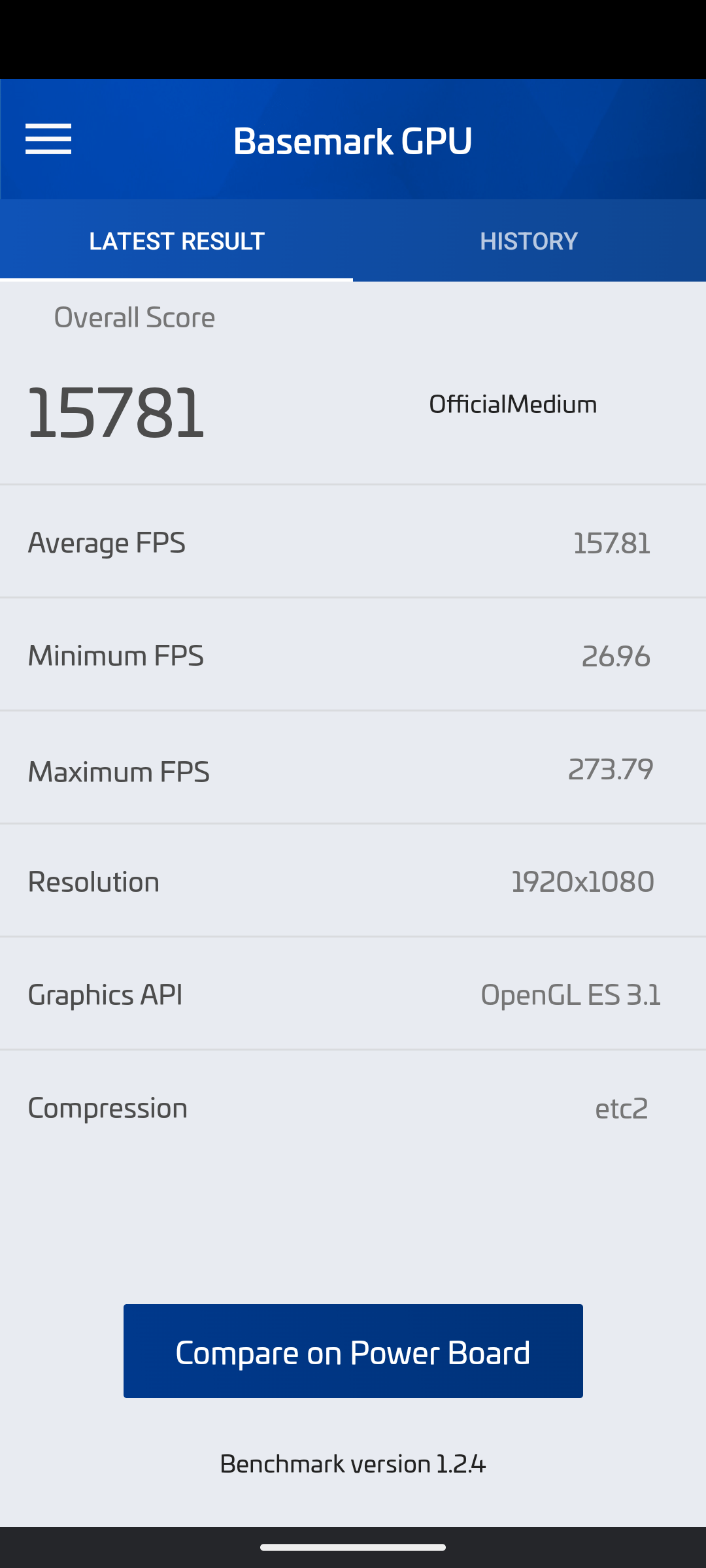

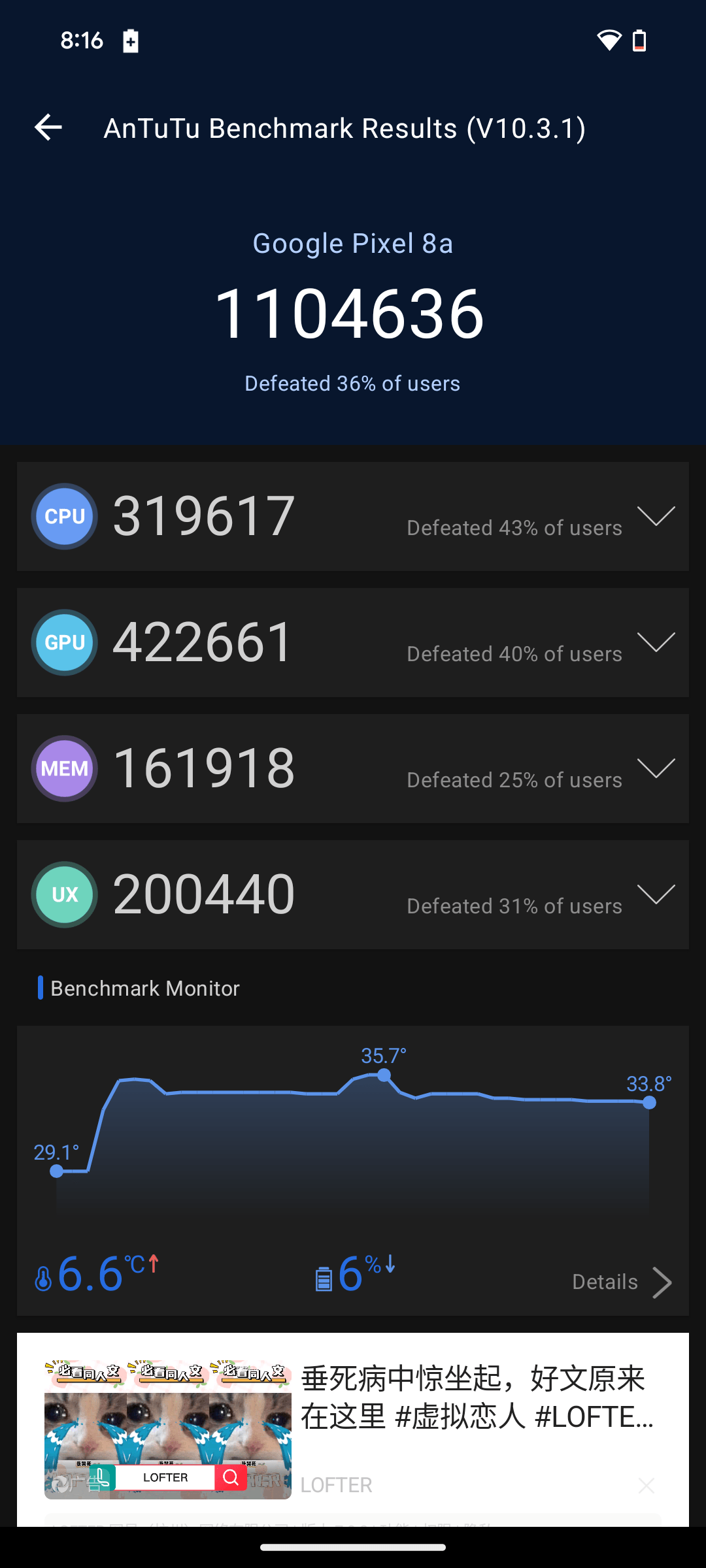
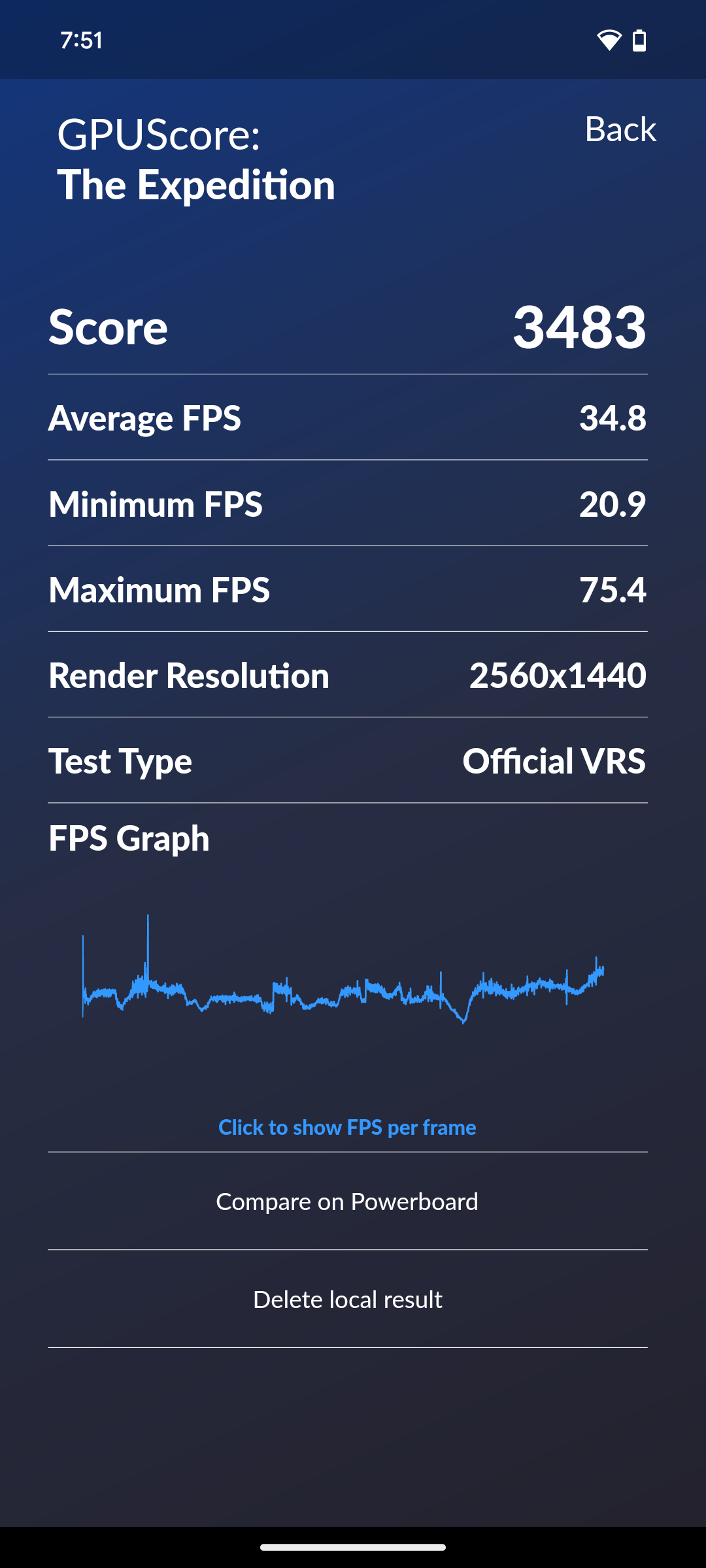
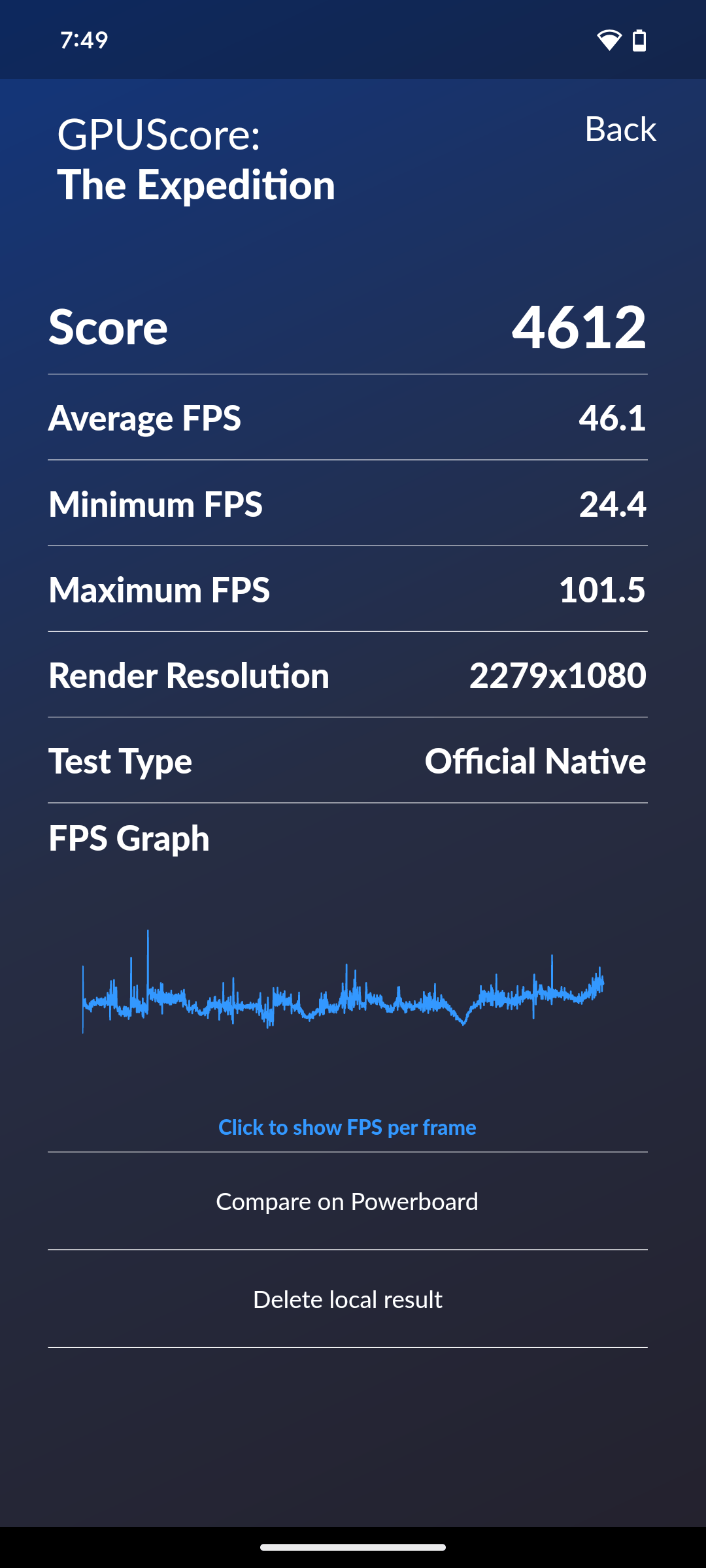

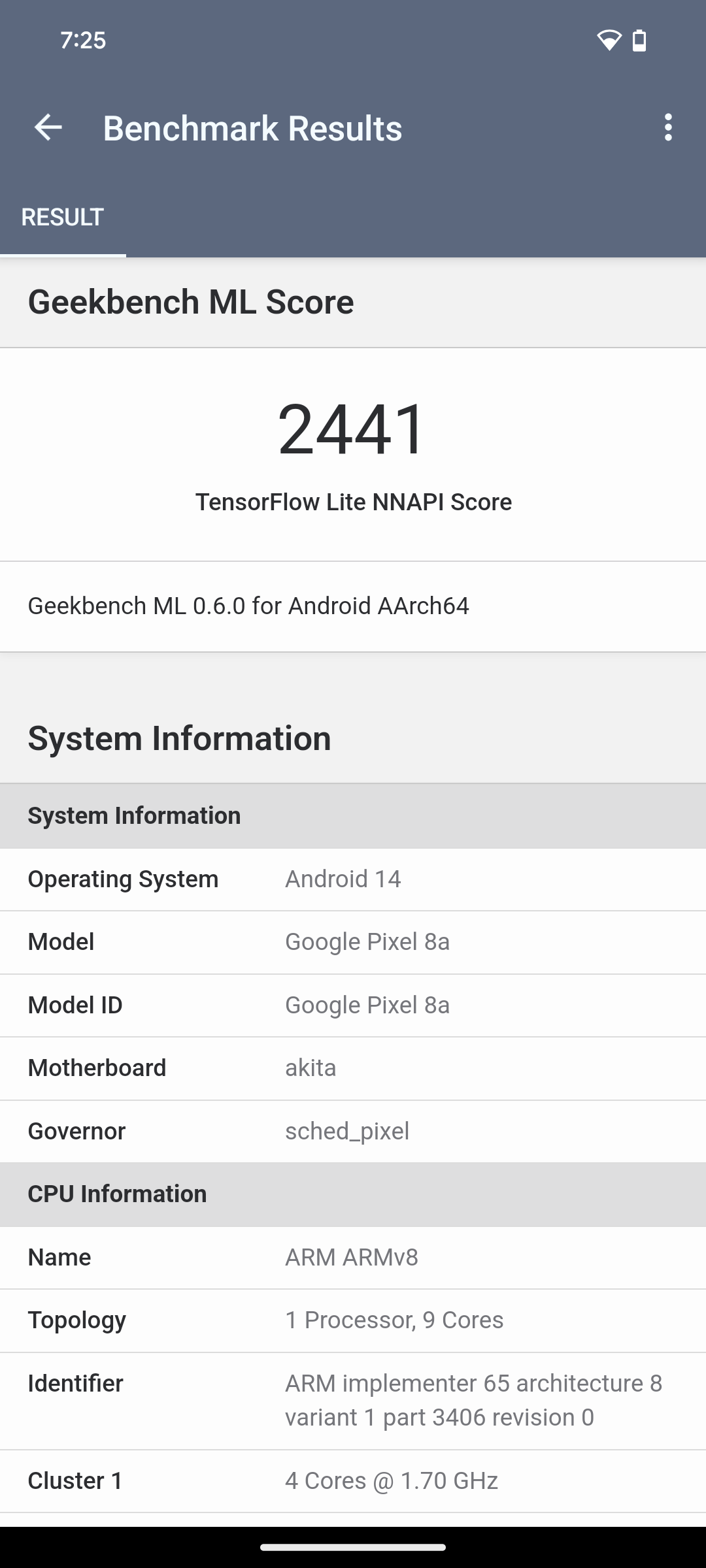

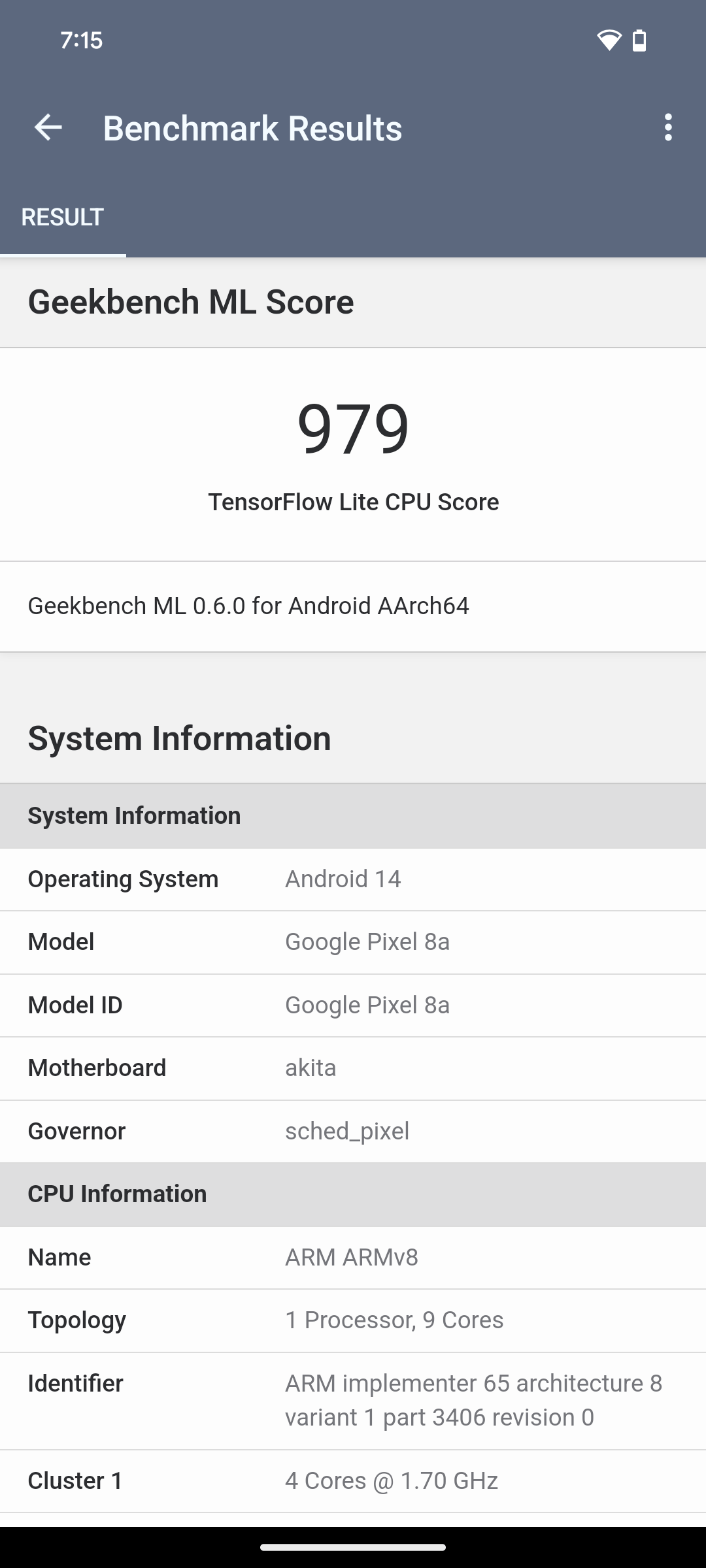
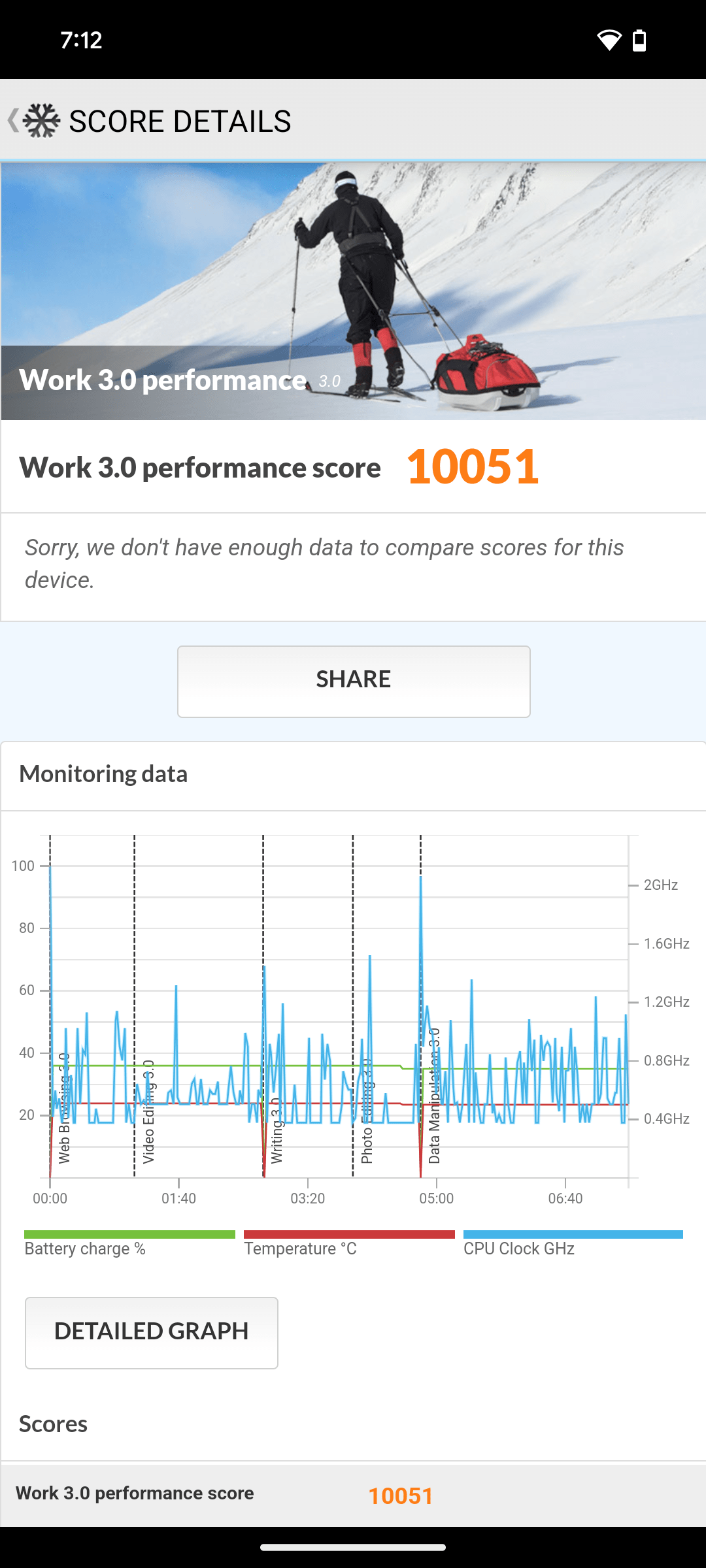

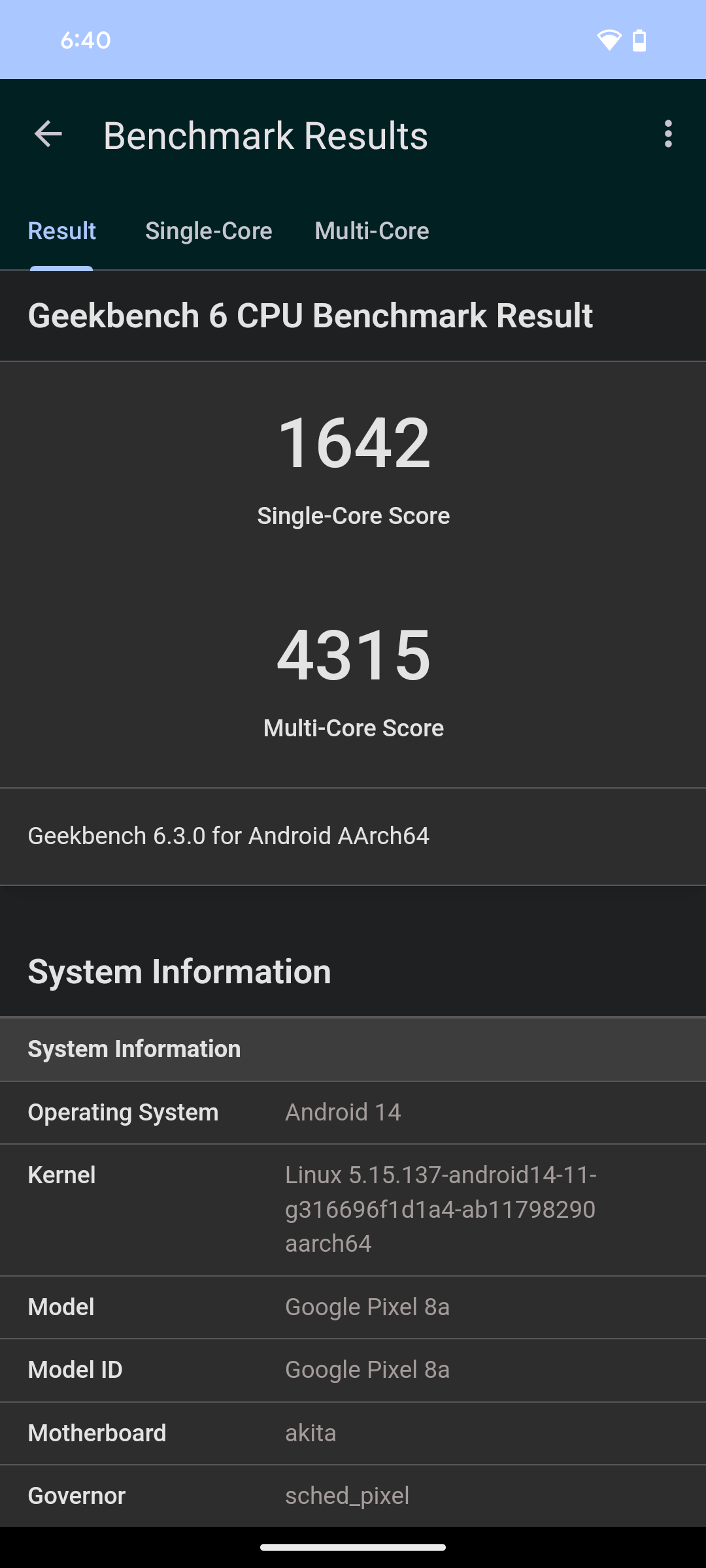
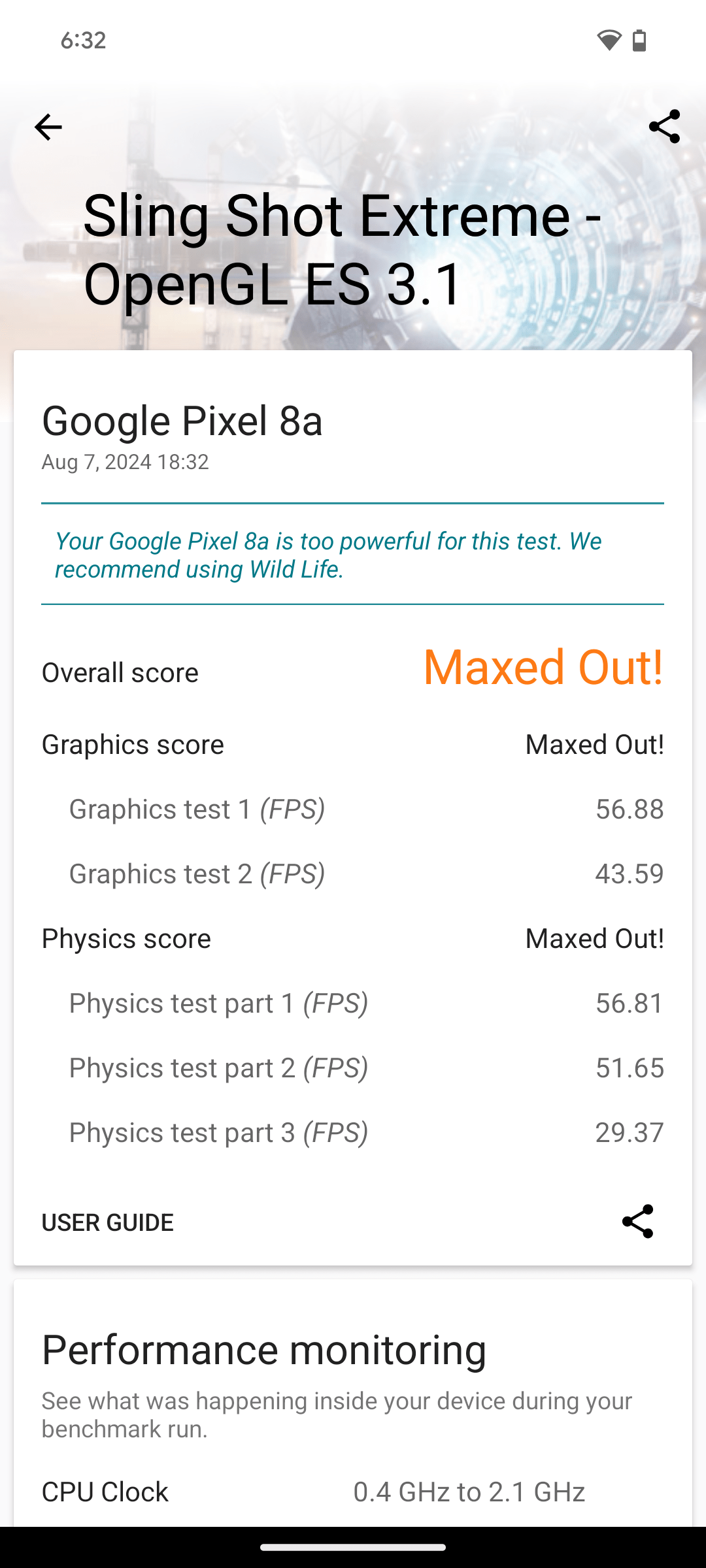
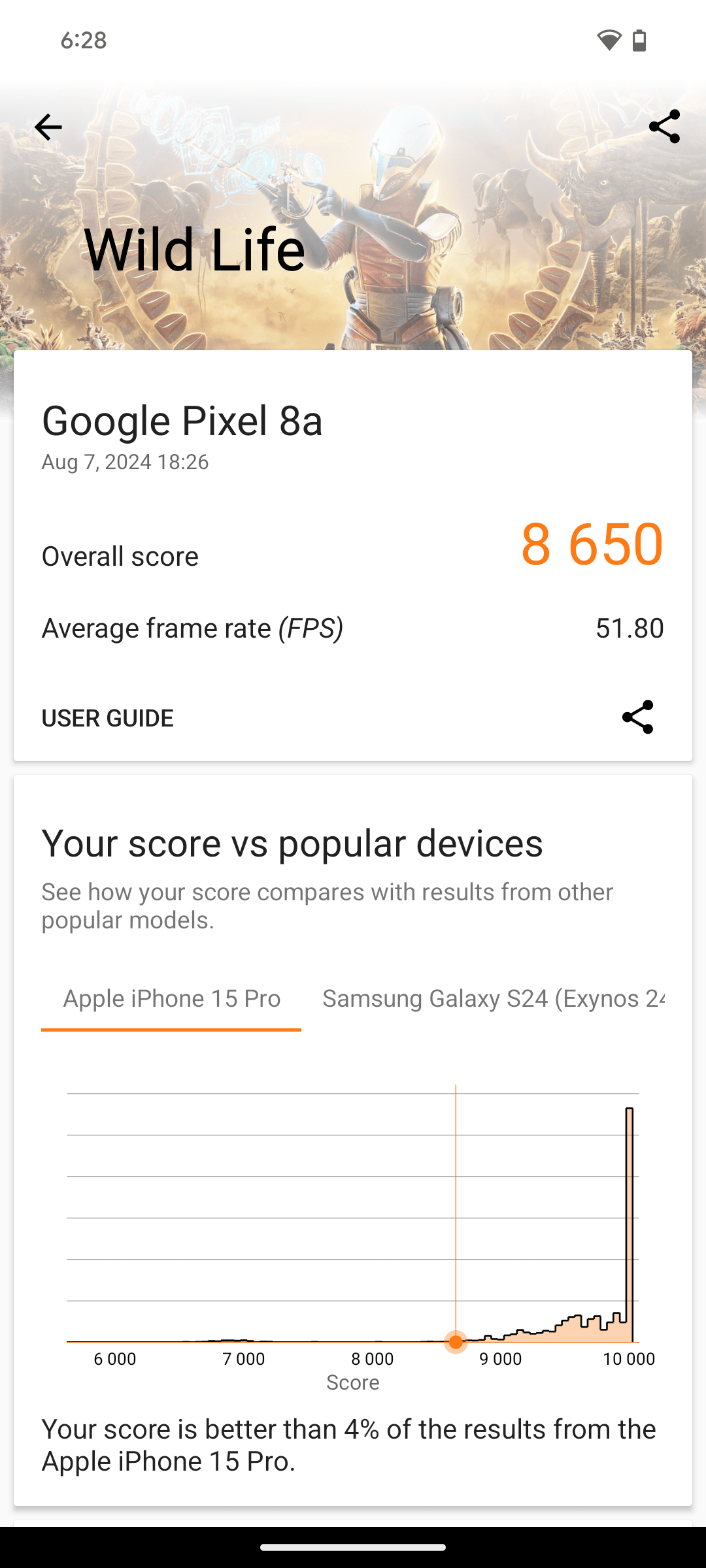
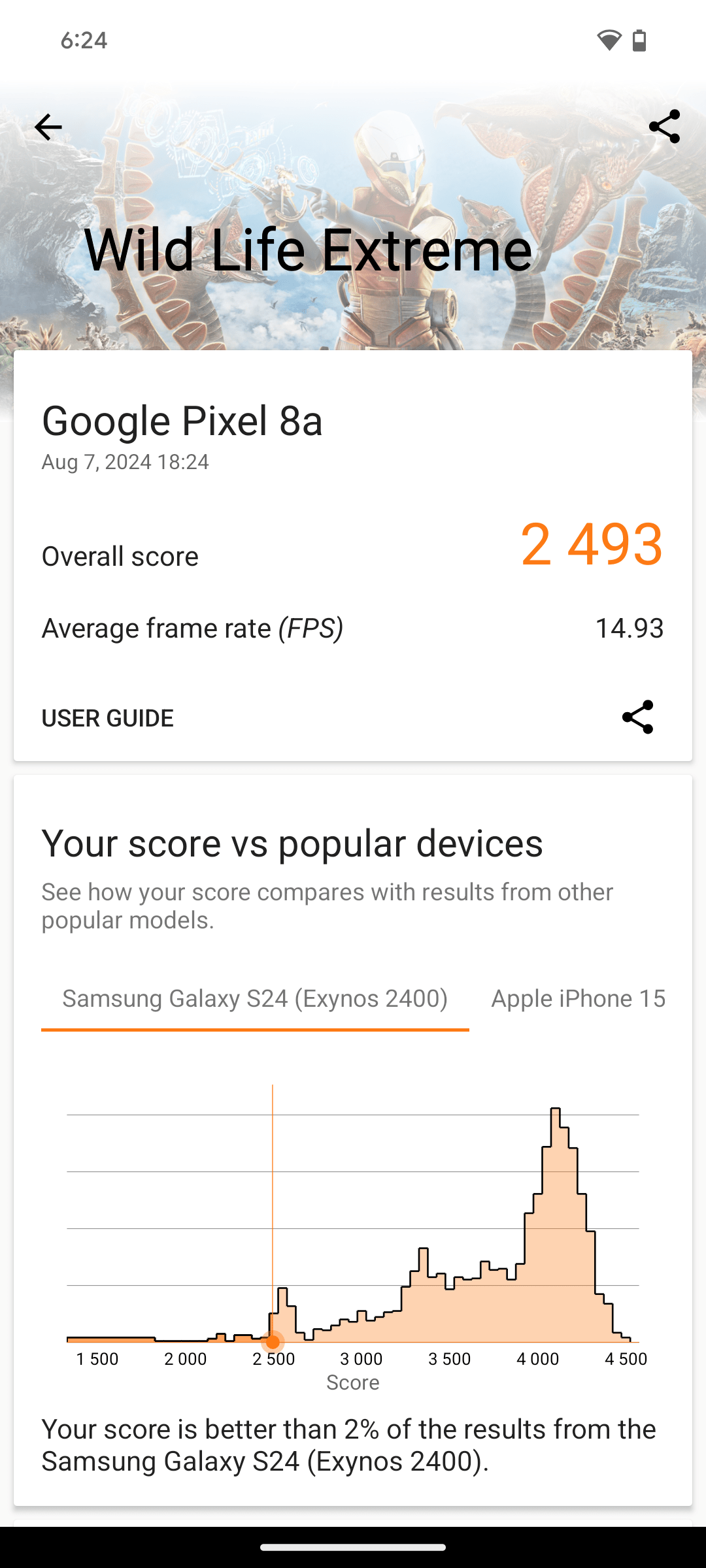
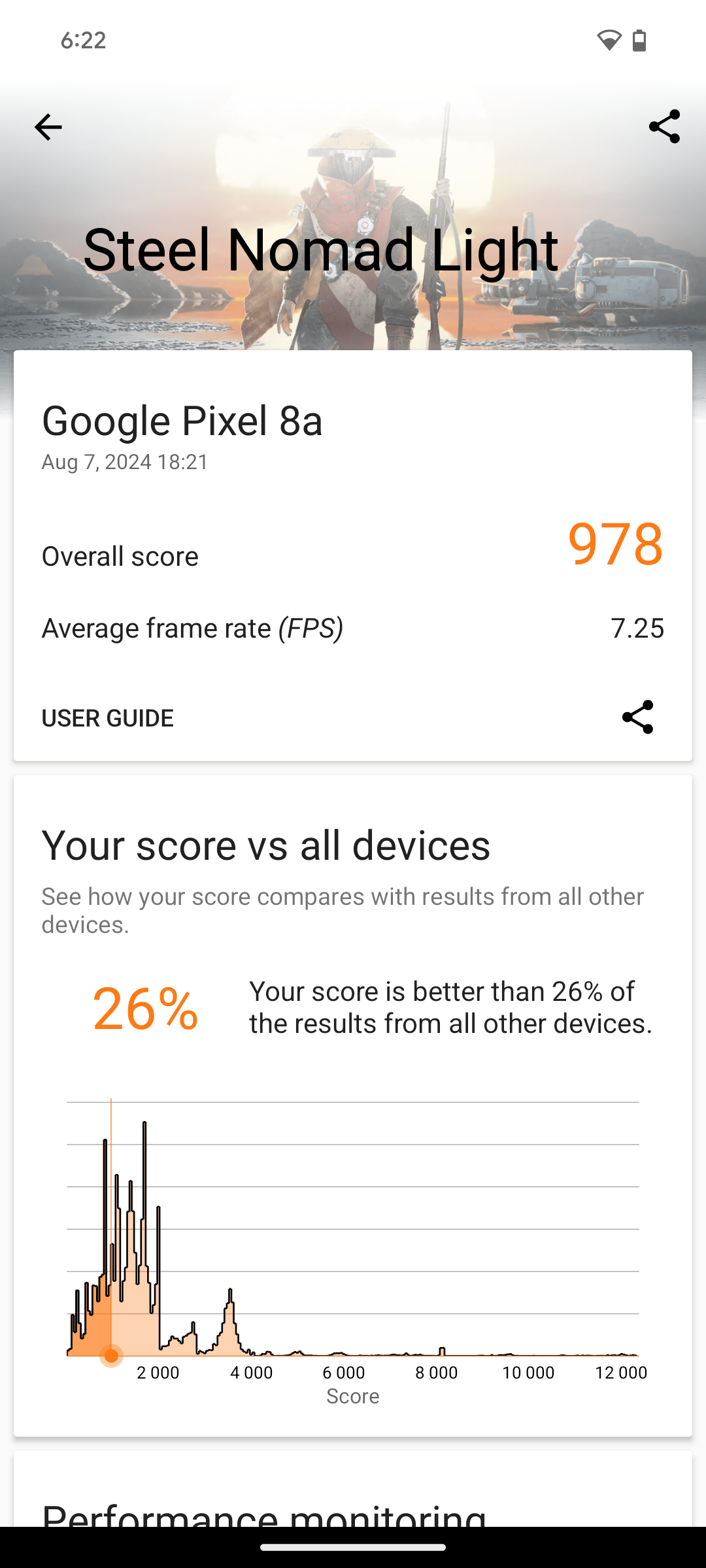
Should you buy Google Pixel 8a?
The Google Pixel 8a has proven to be an exceptionally capable compact smartphone. It features a distinctive and appealing design and delivers solid performance. The camera also lives up to the Pixel reputation, making it a well-rounded choice for those seeking a compact device. It’s offers a clean Android experience with no bloatware, unlike other brands such as Samsung and Xiaomi. It benefits from first-tier firmware updates and receives up to 7 years of security updates, ensuring a long-term, secure, and up-to-date user experience.
